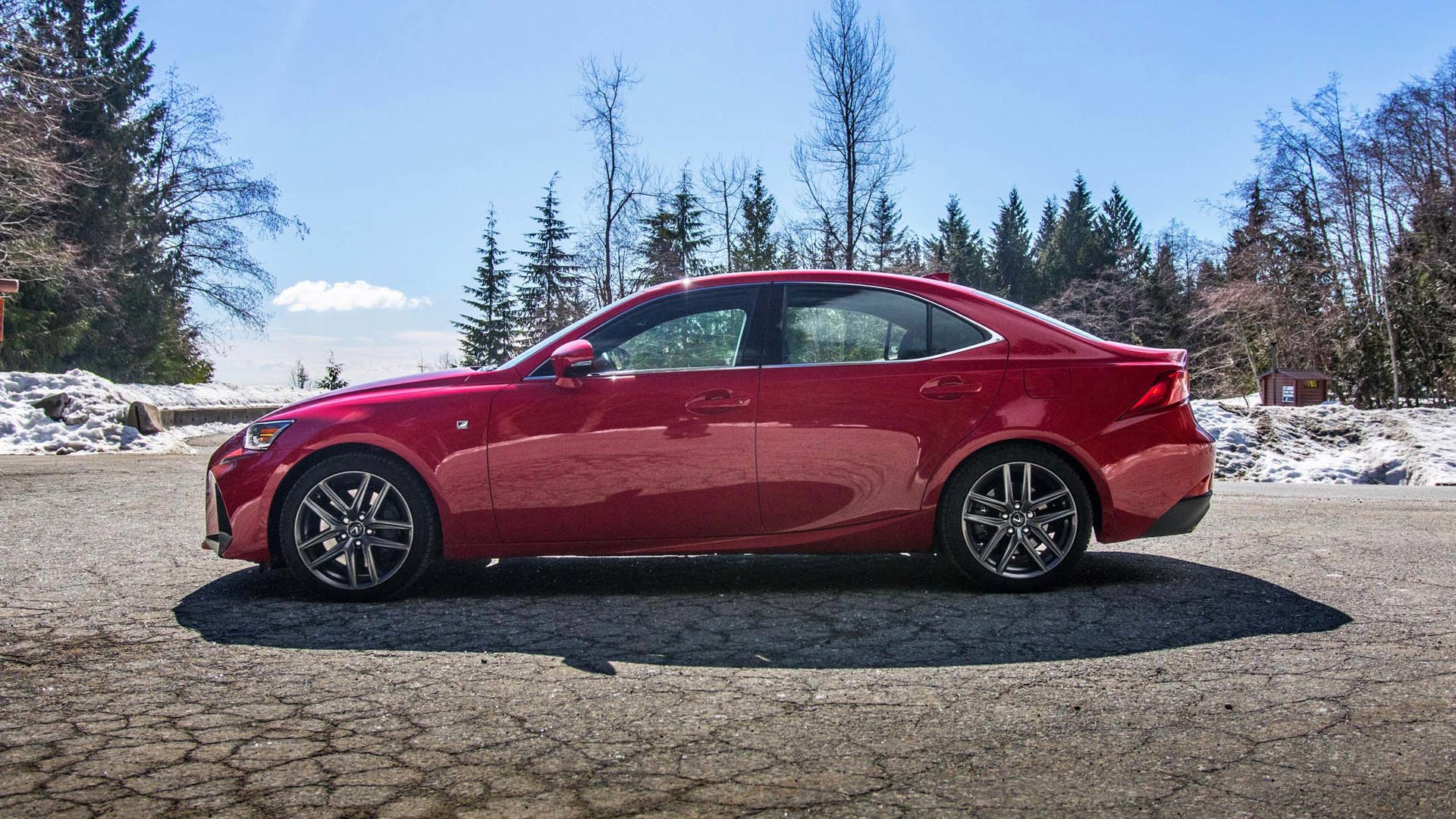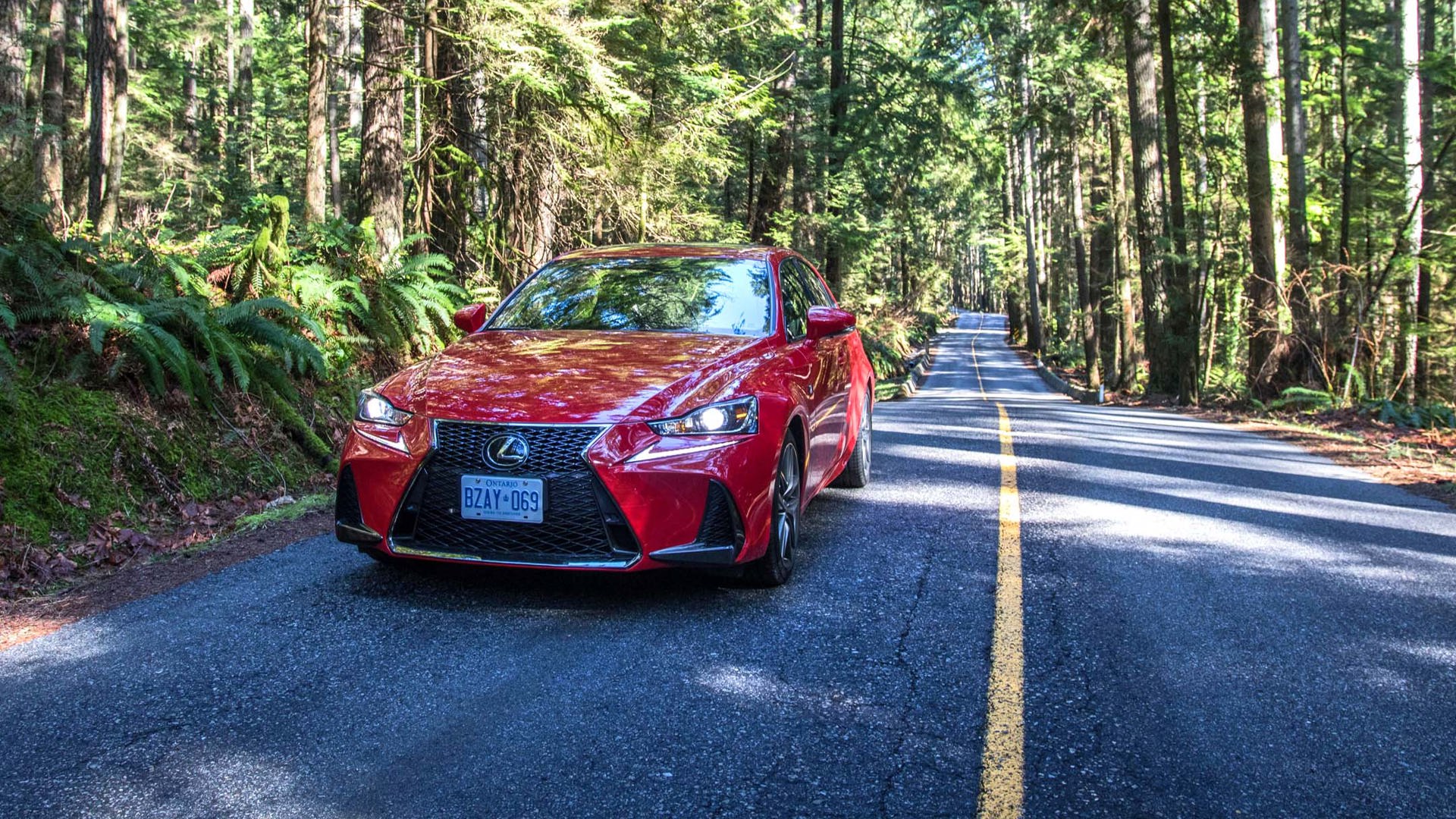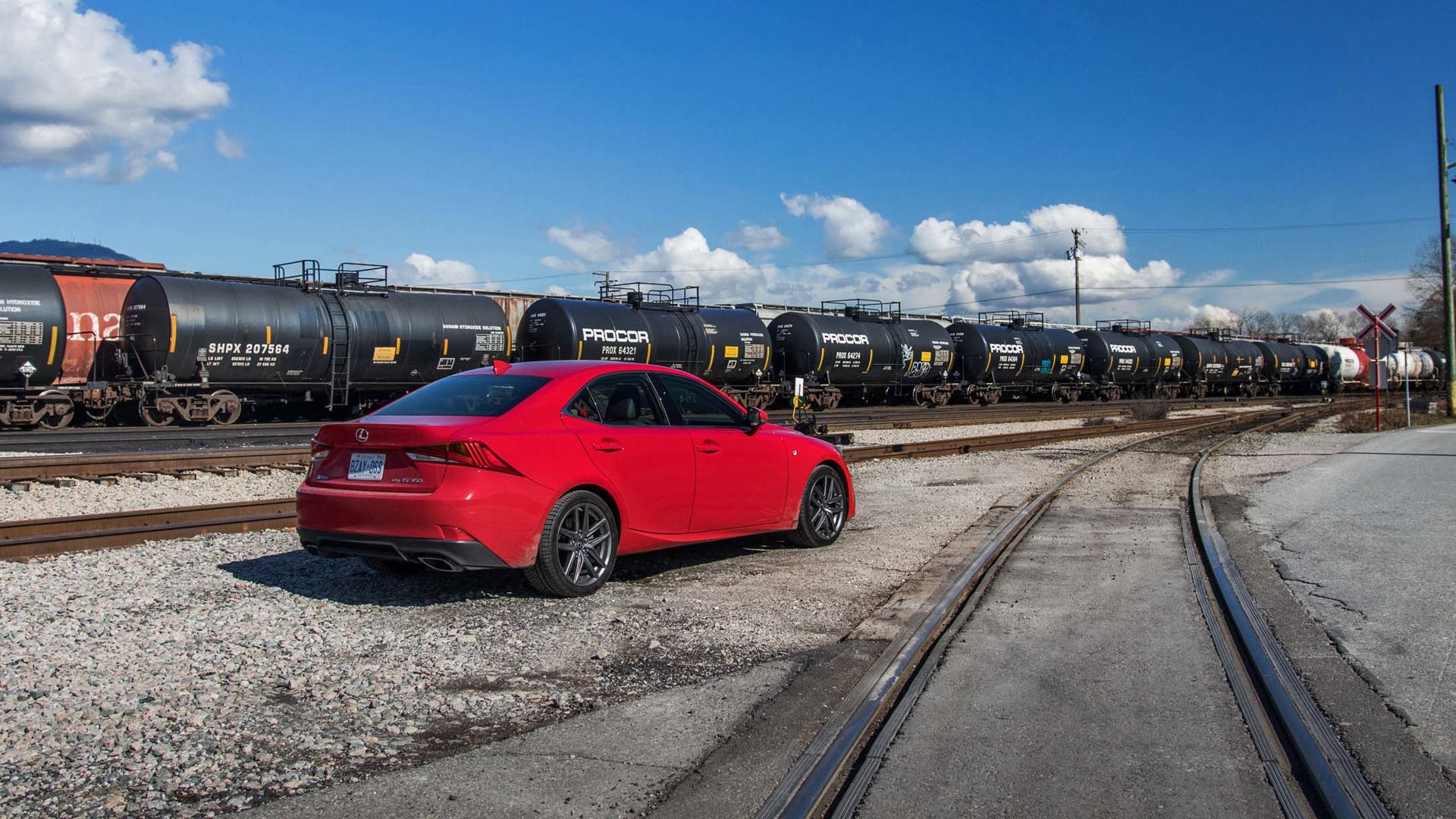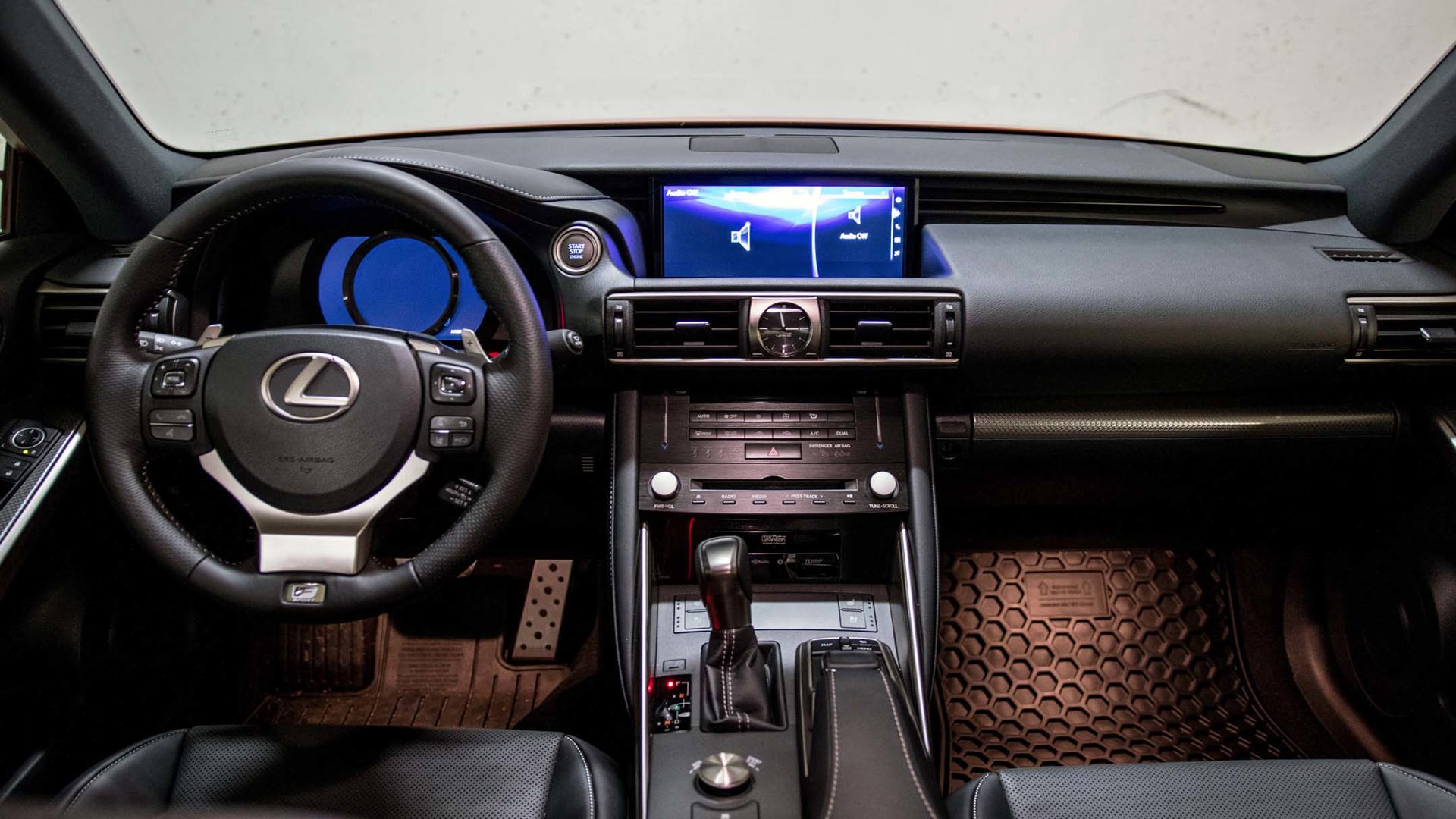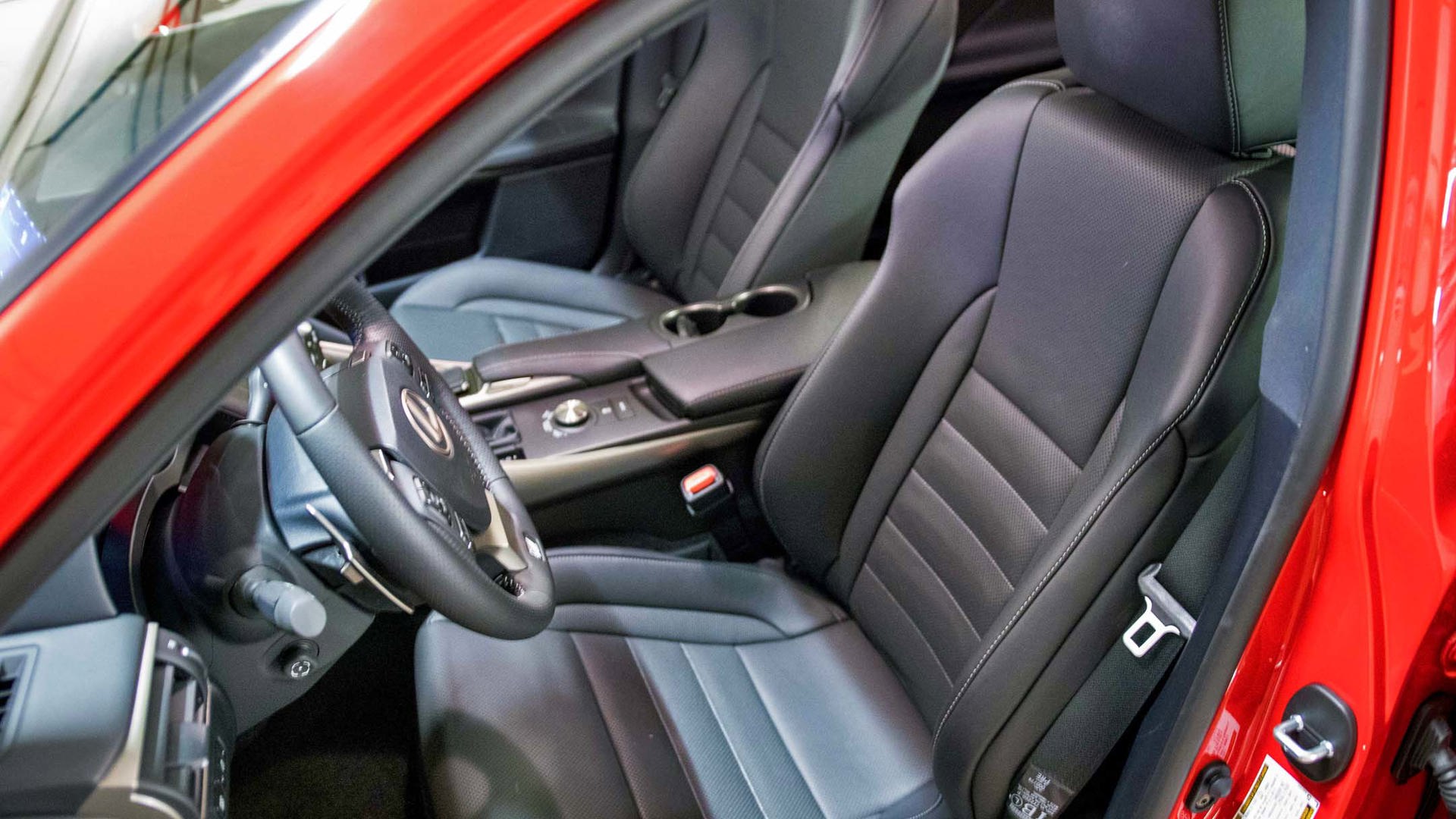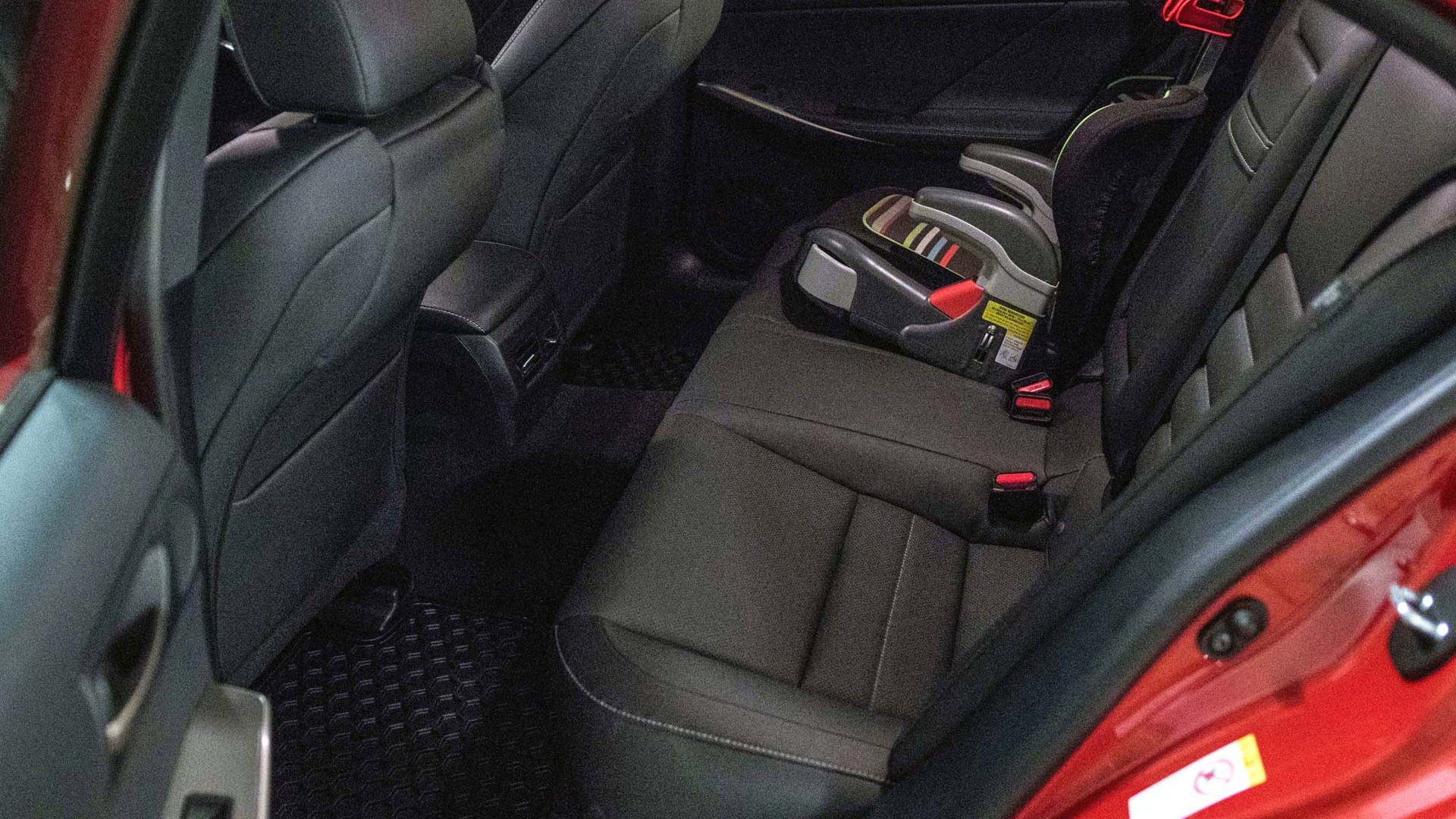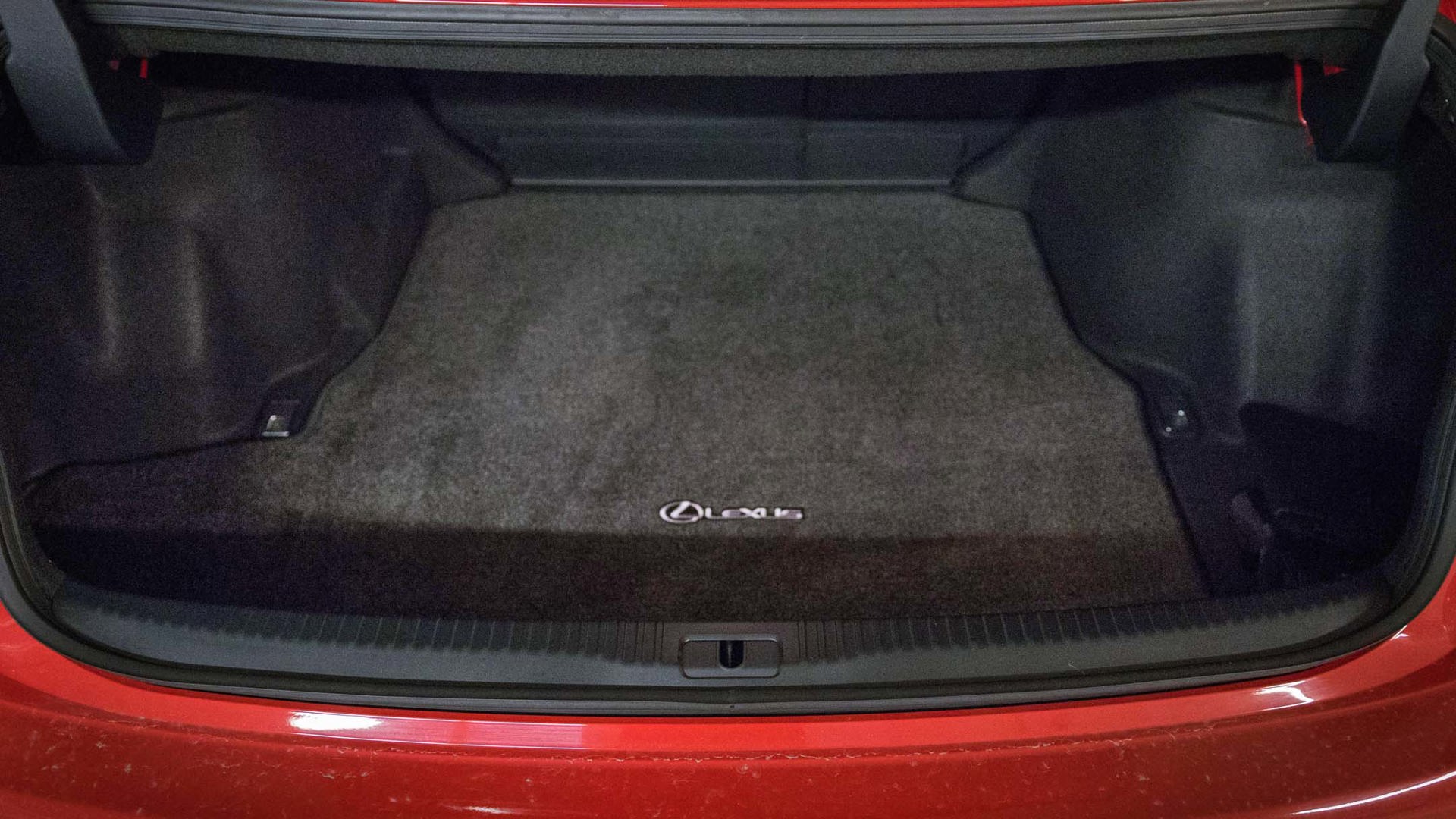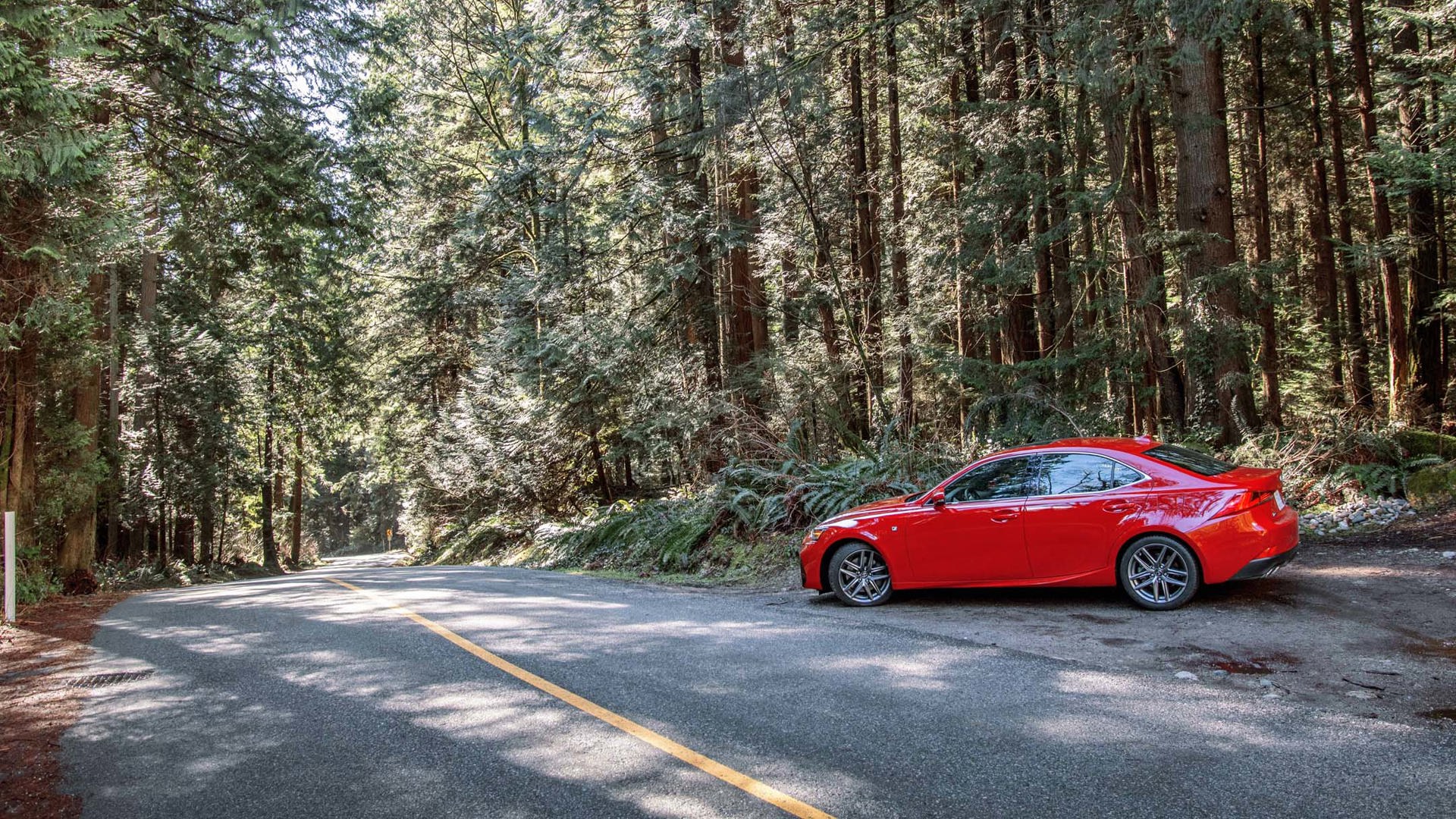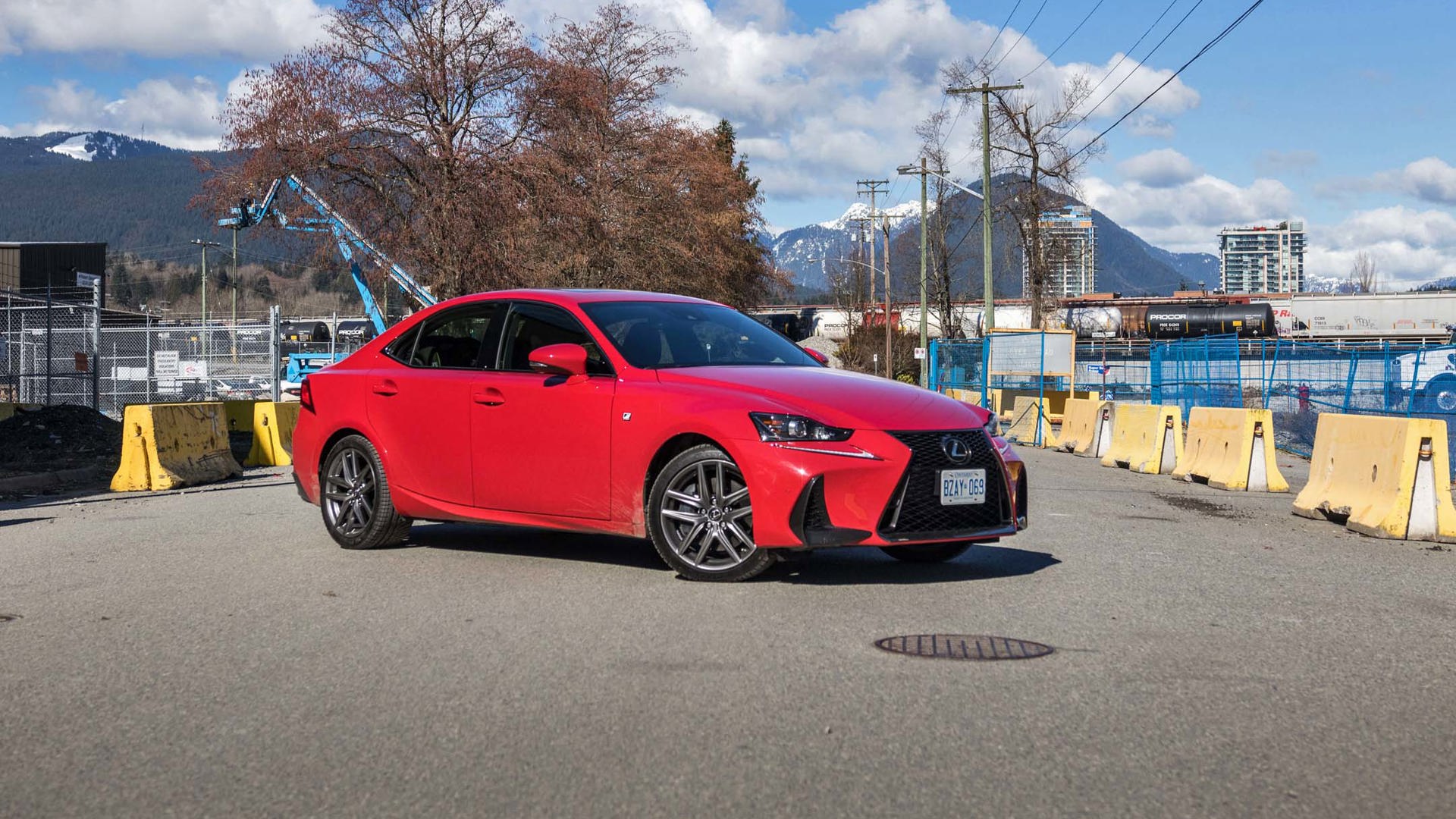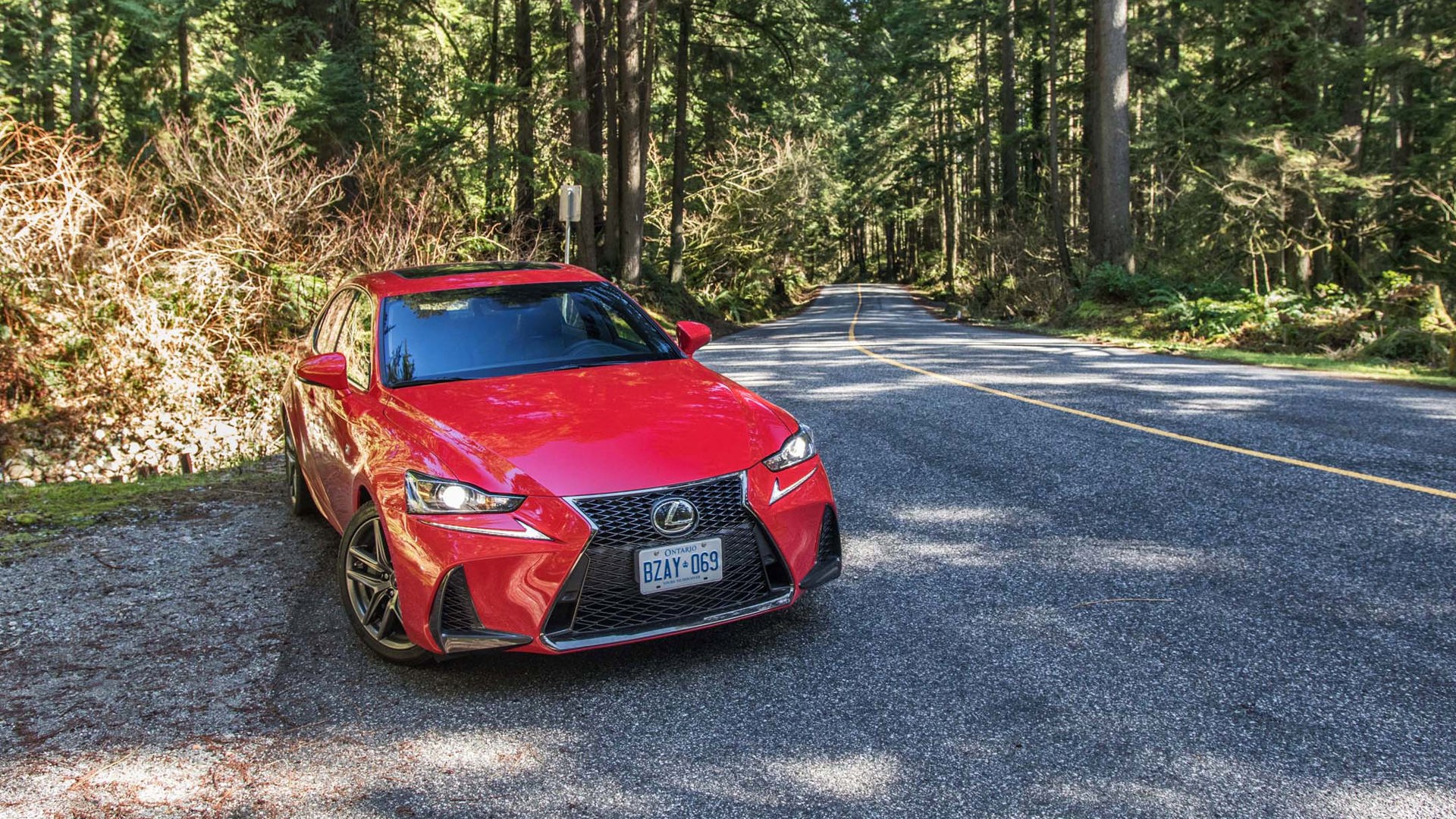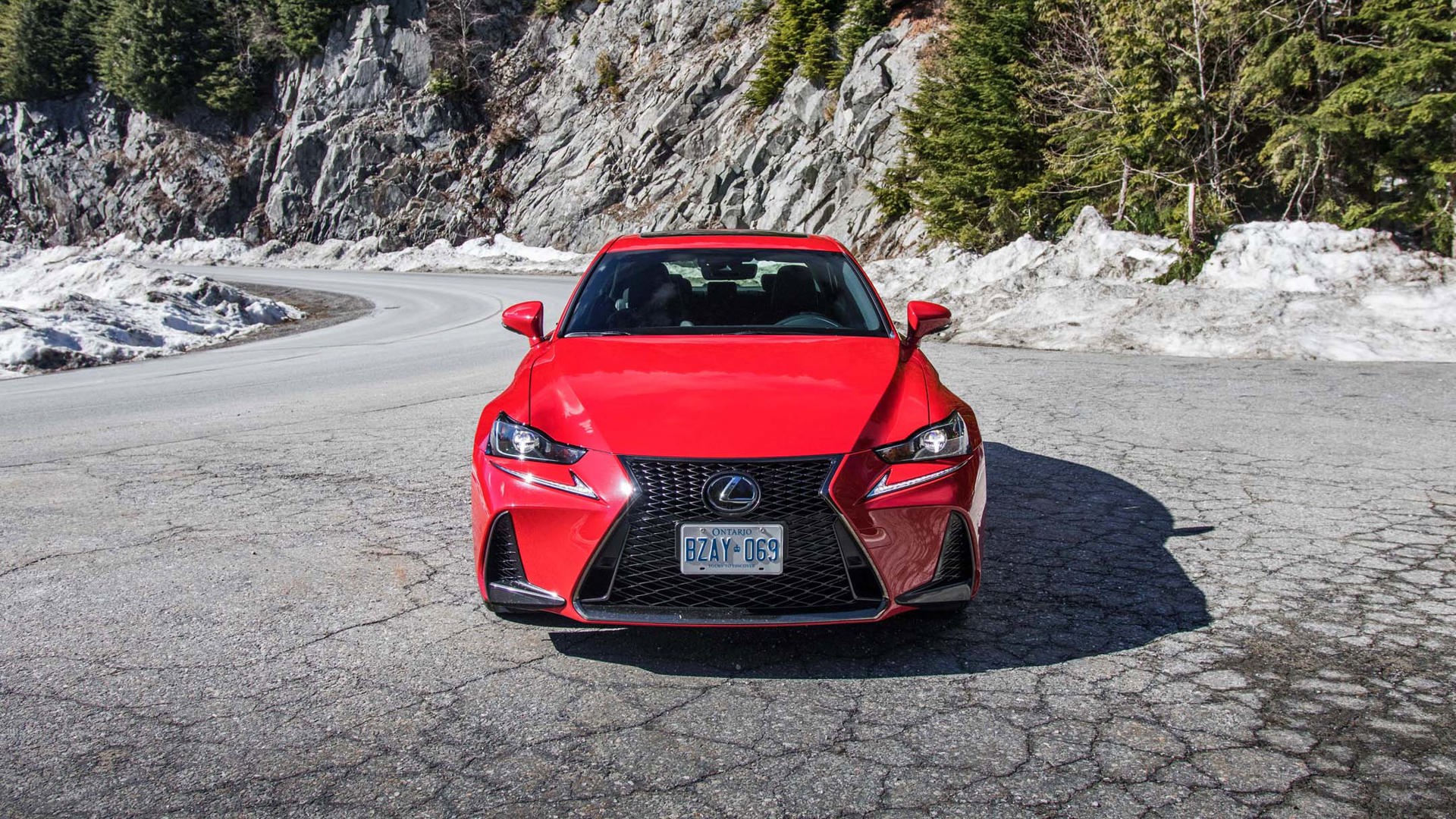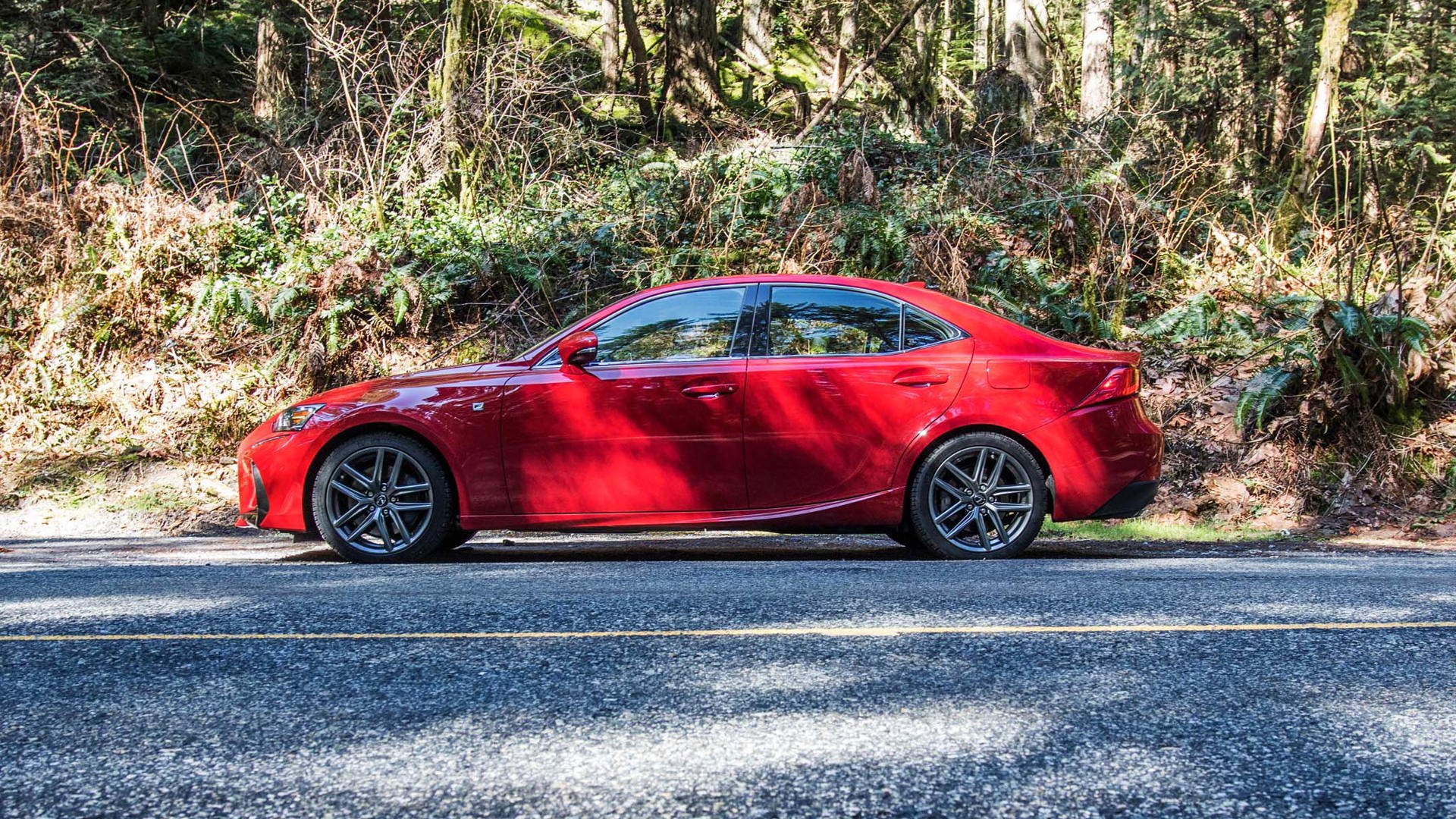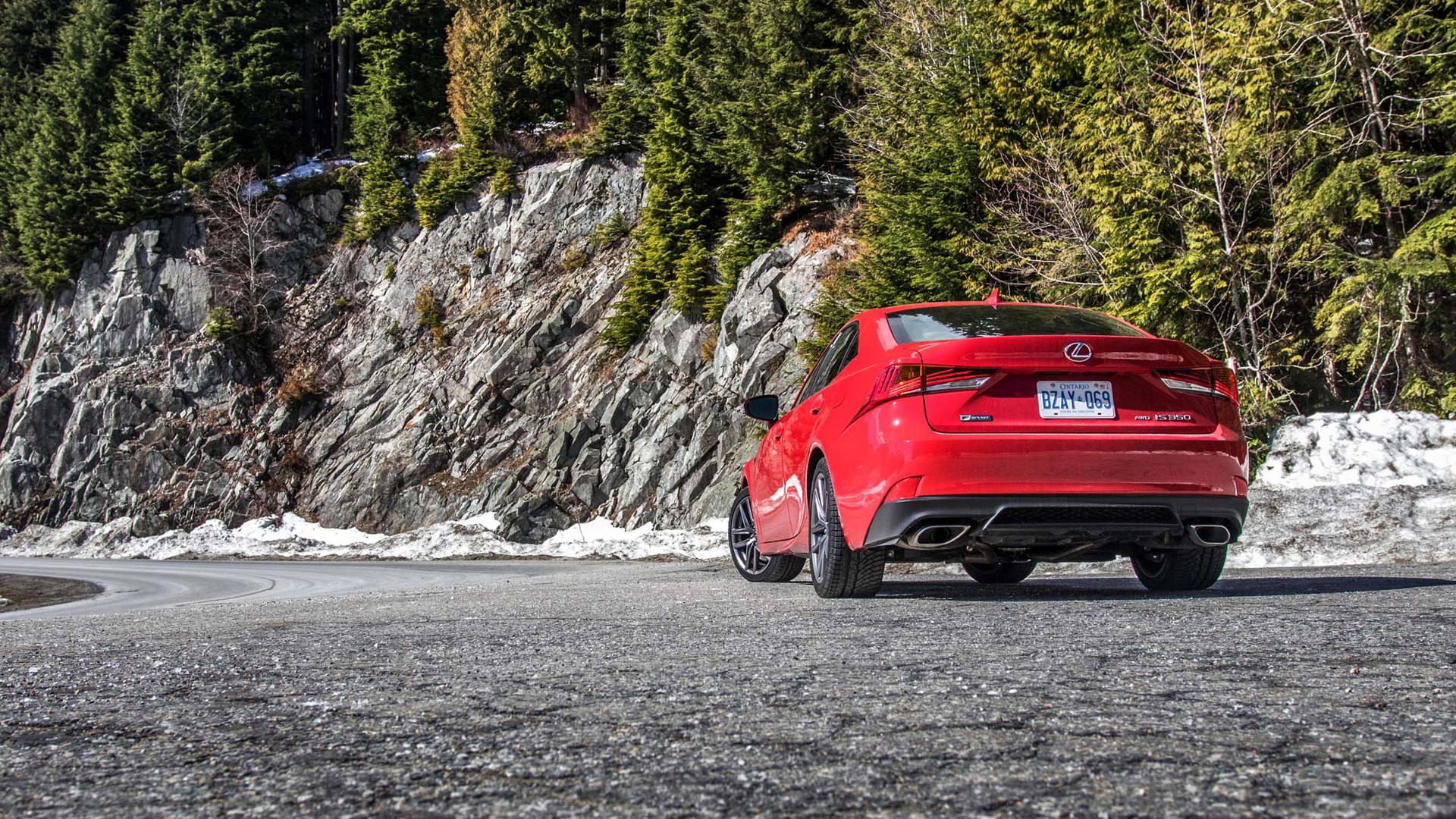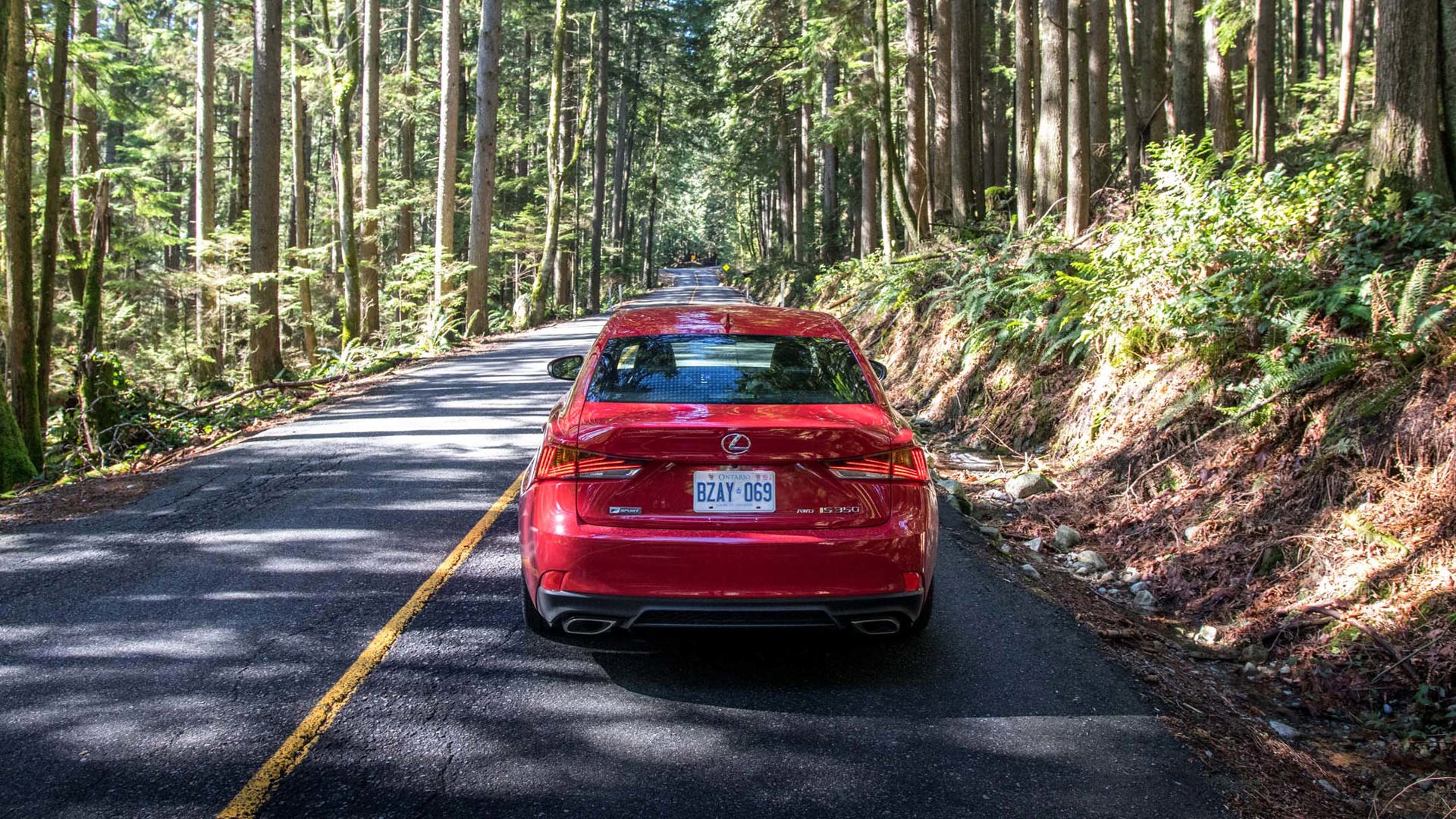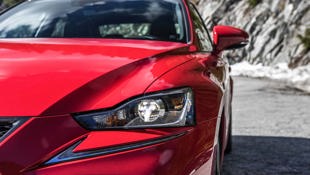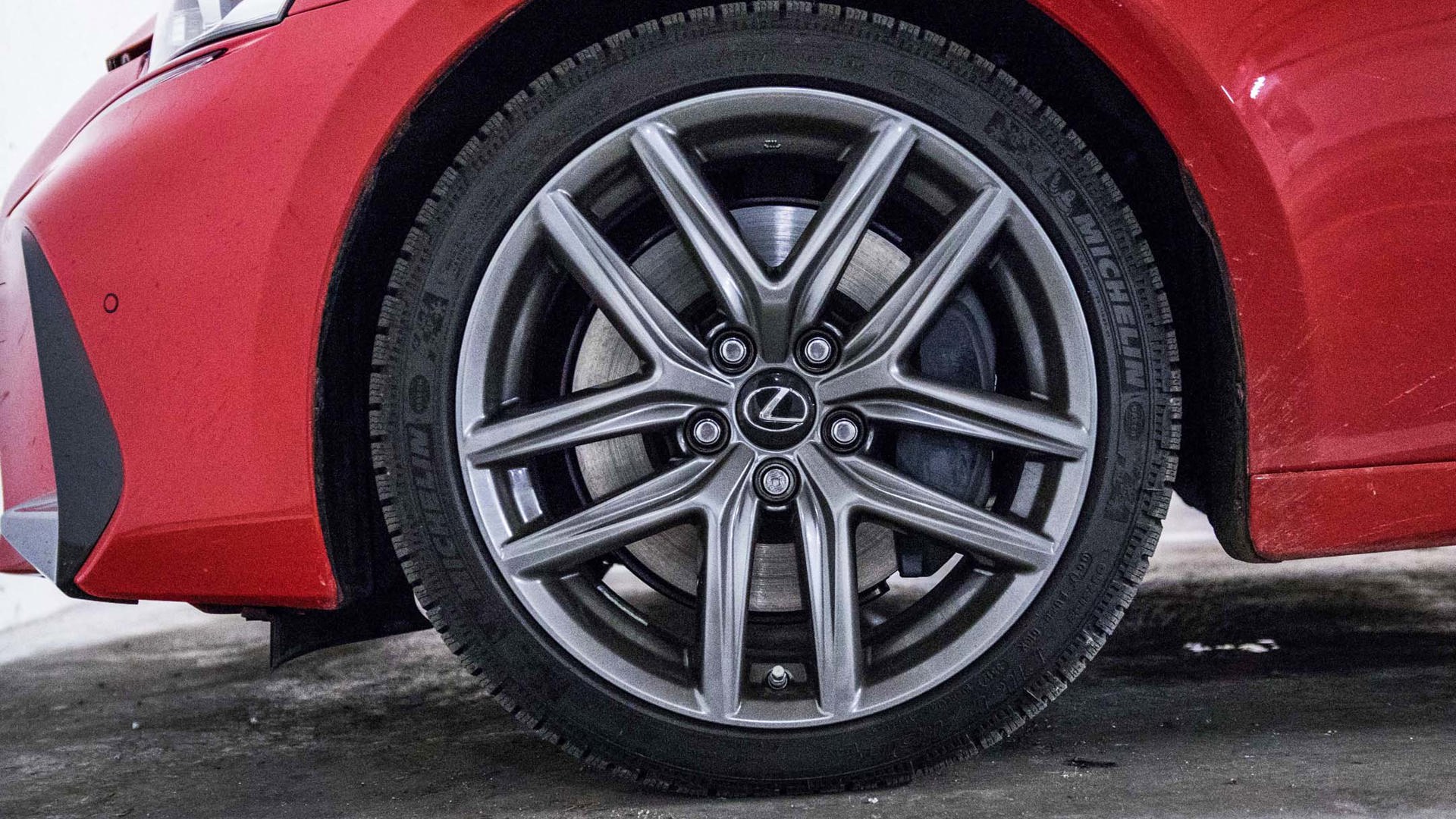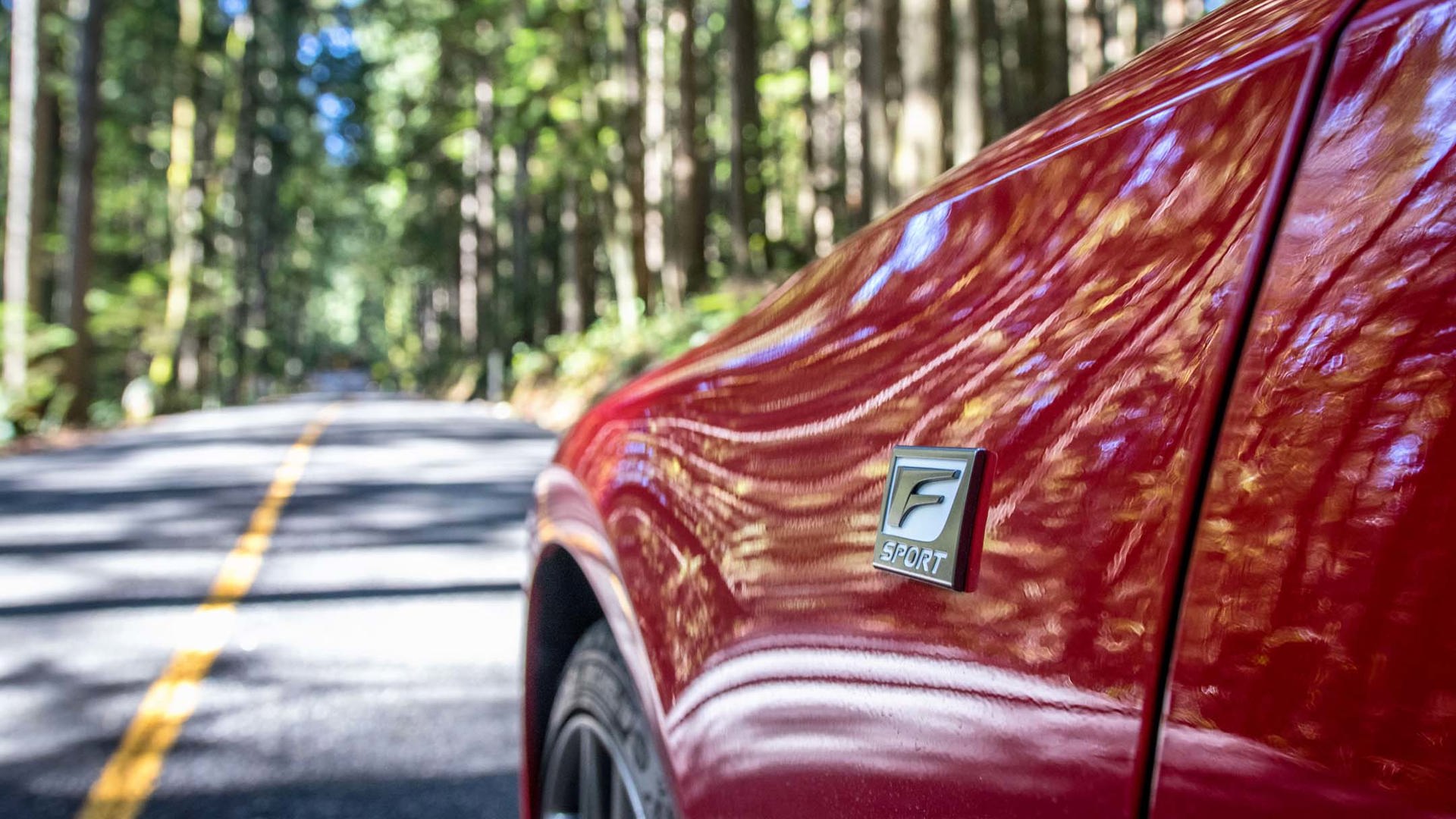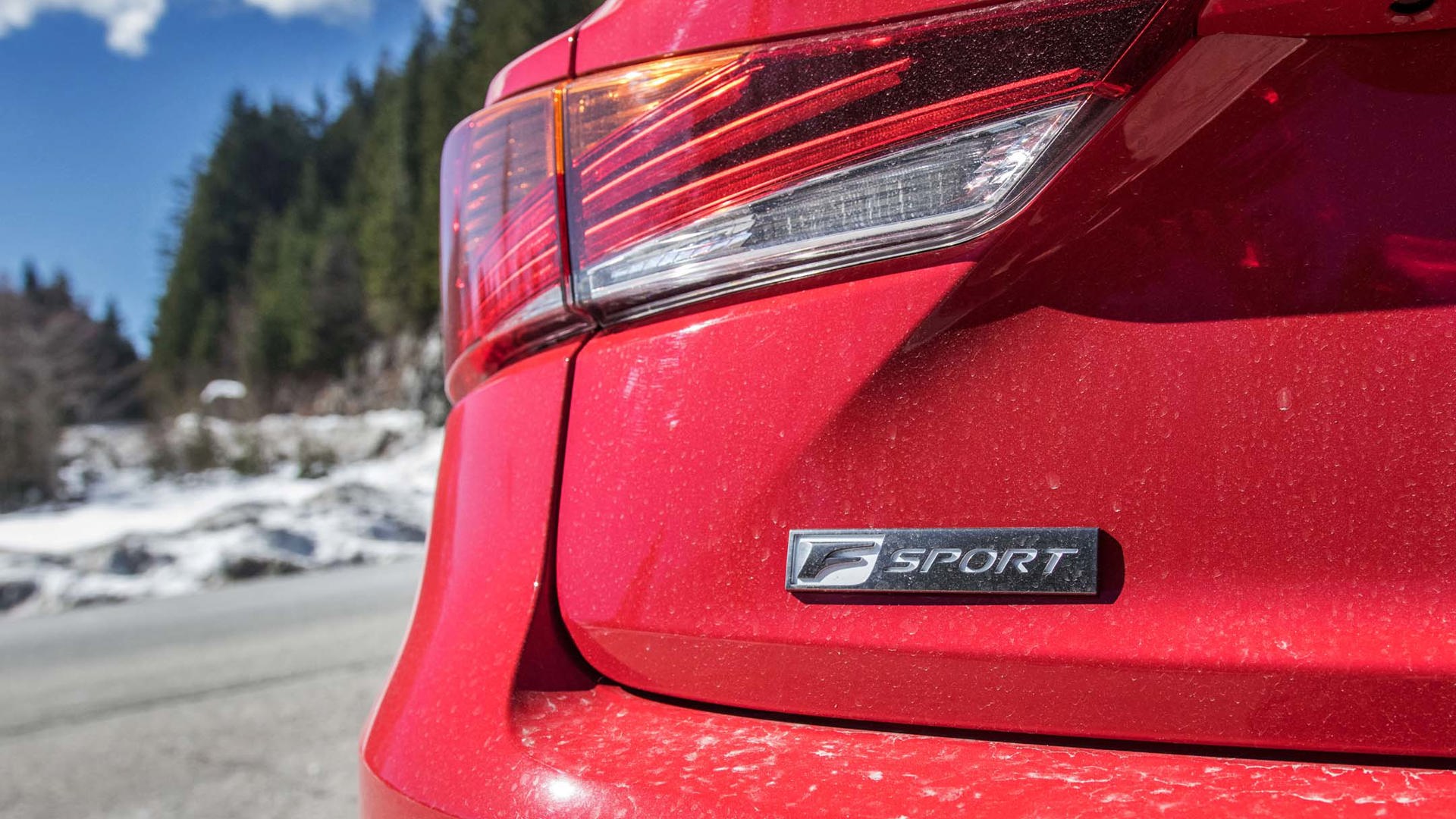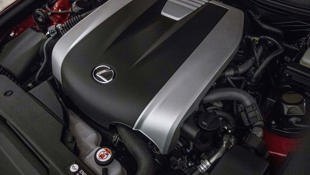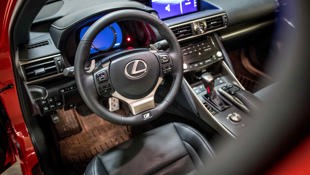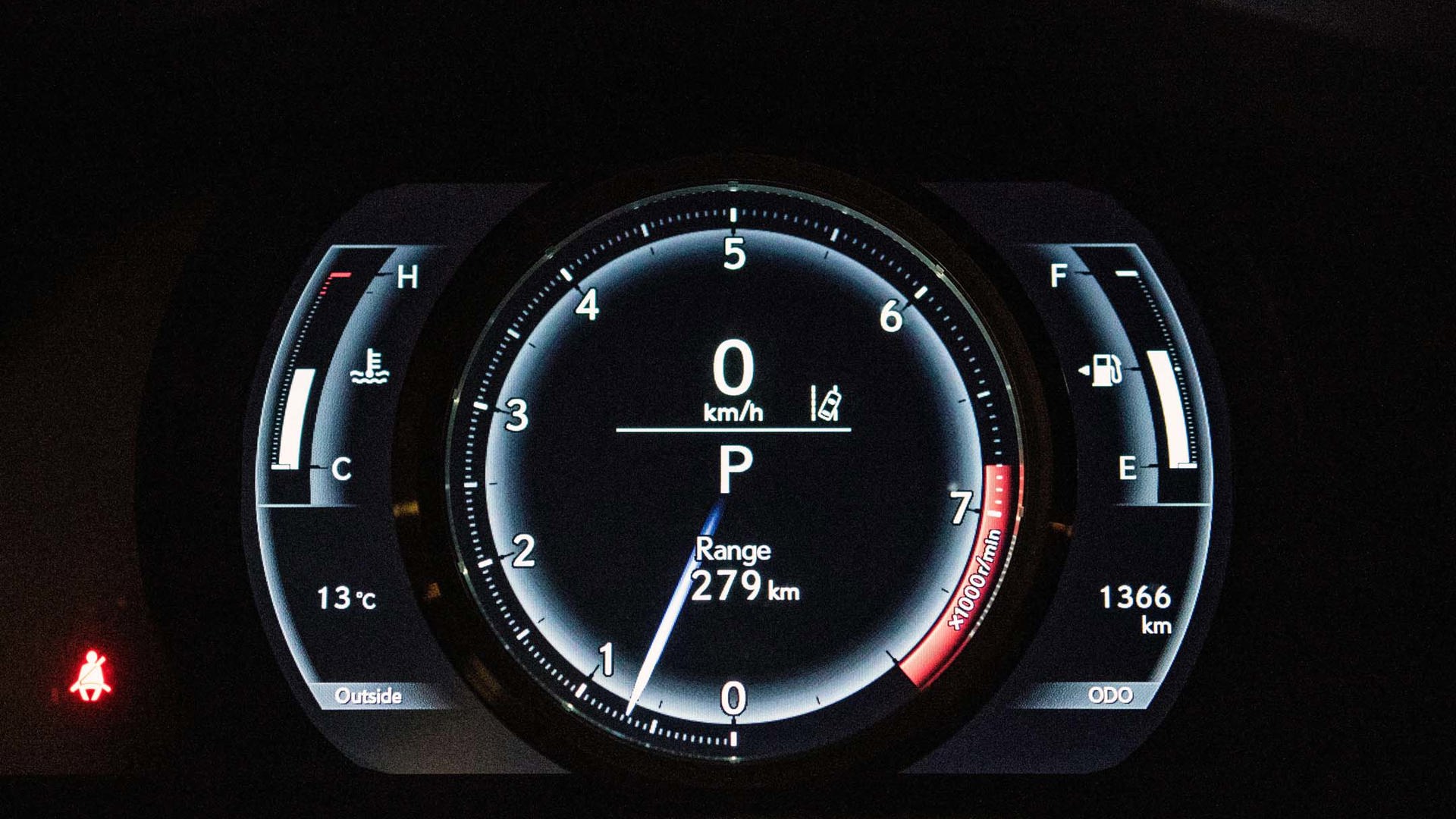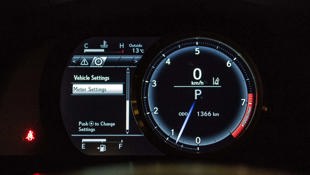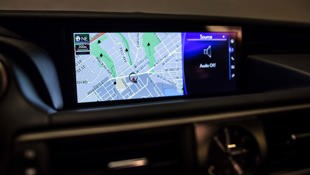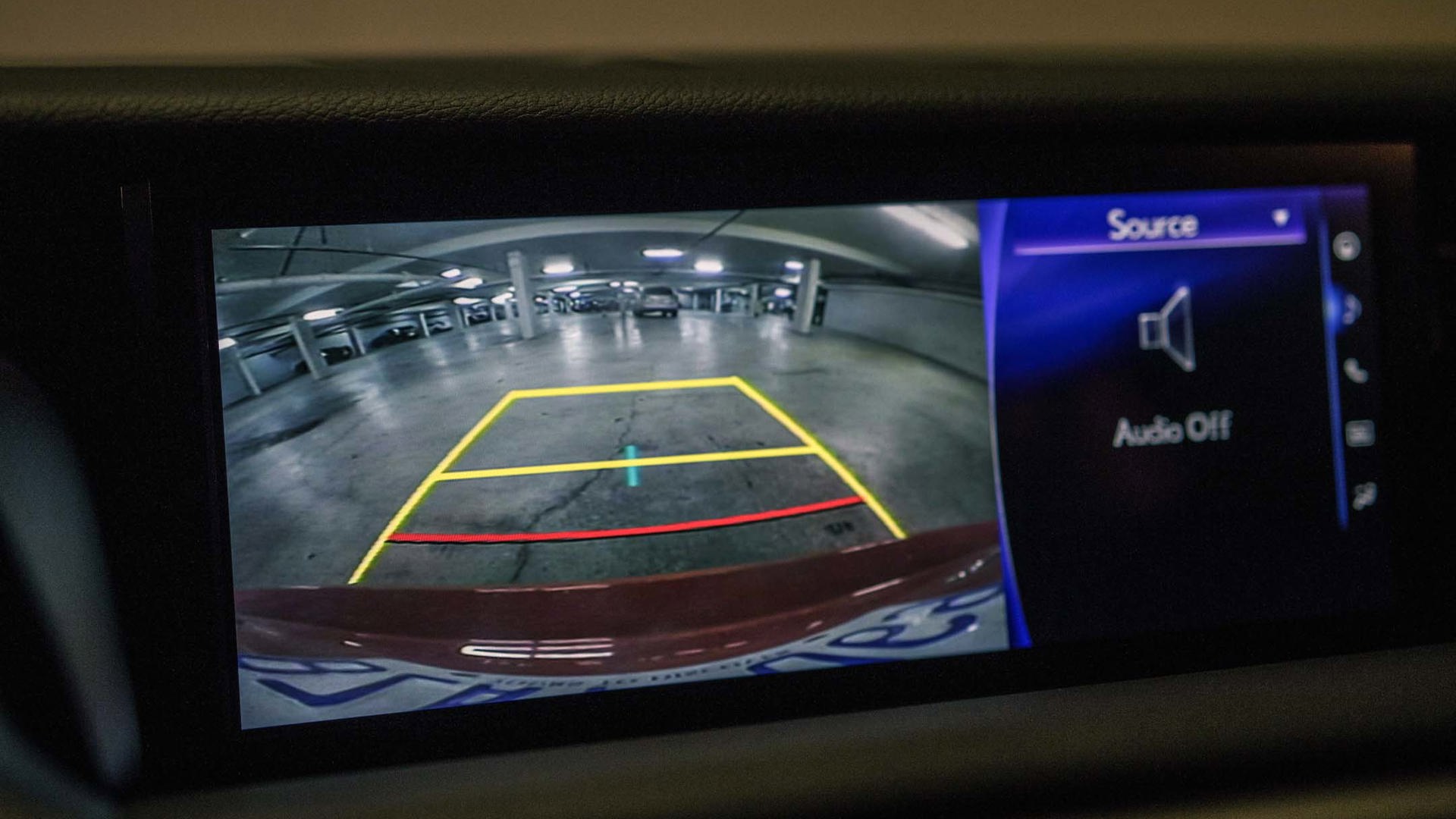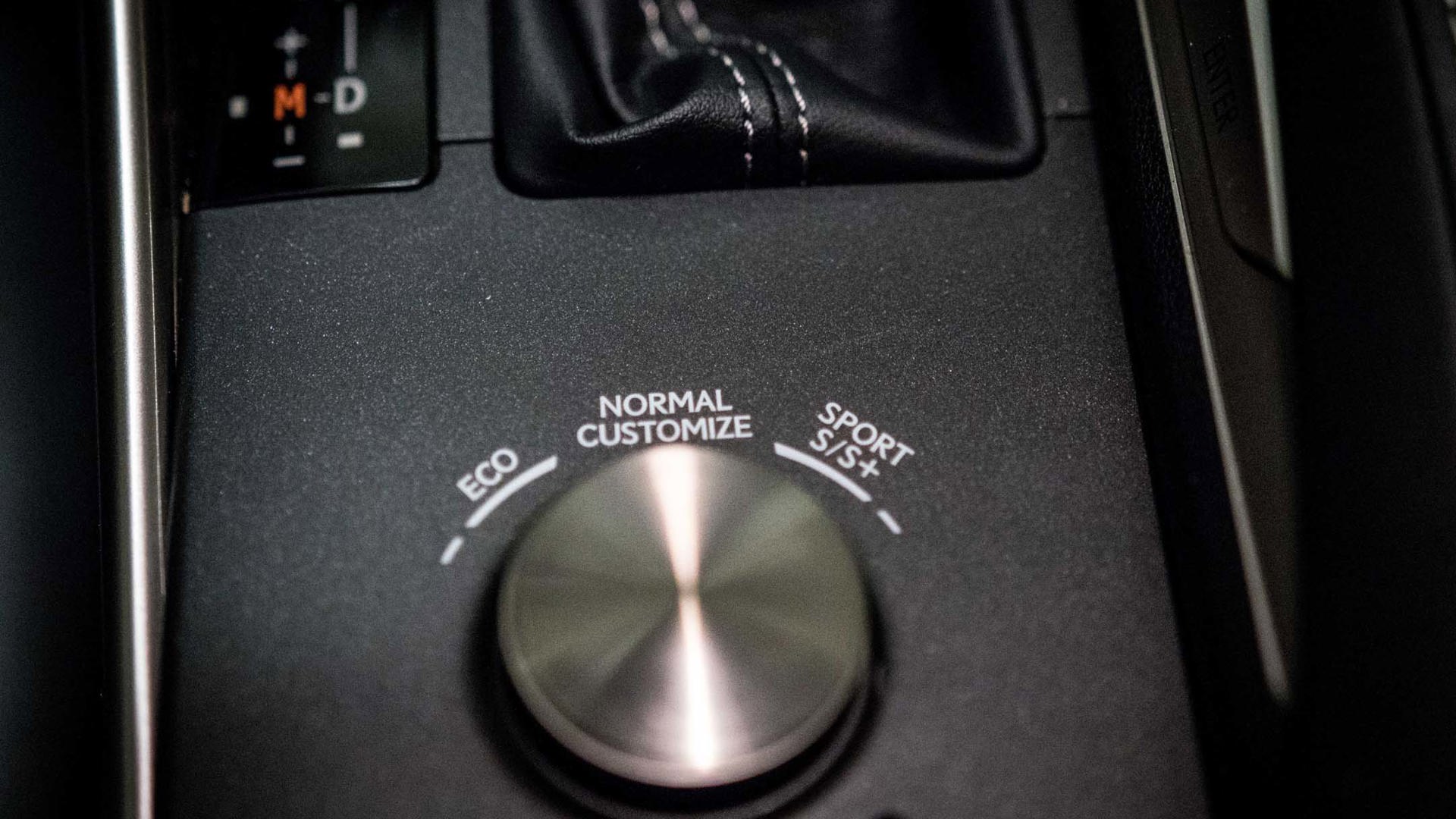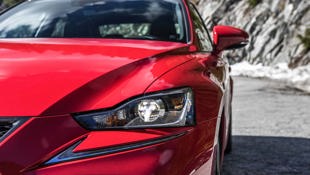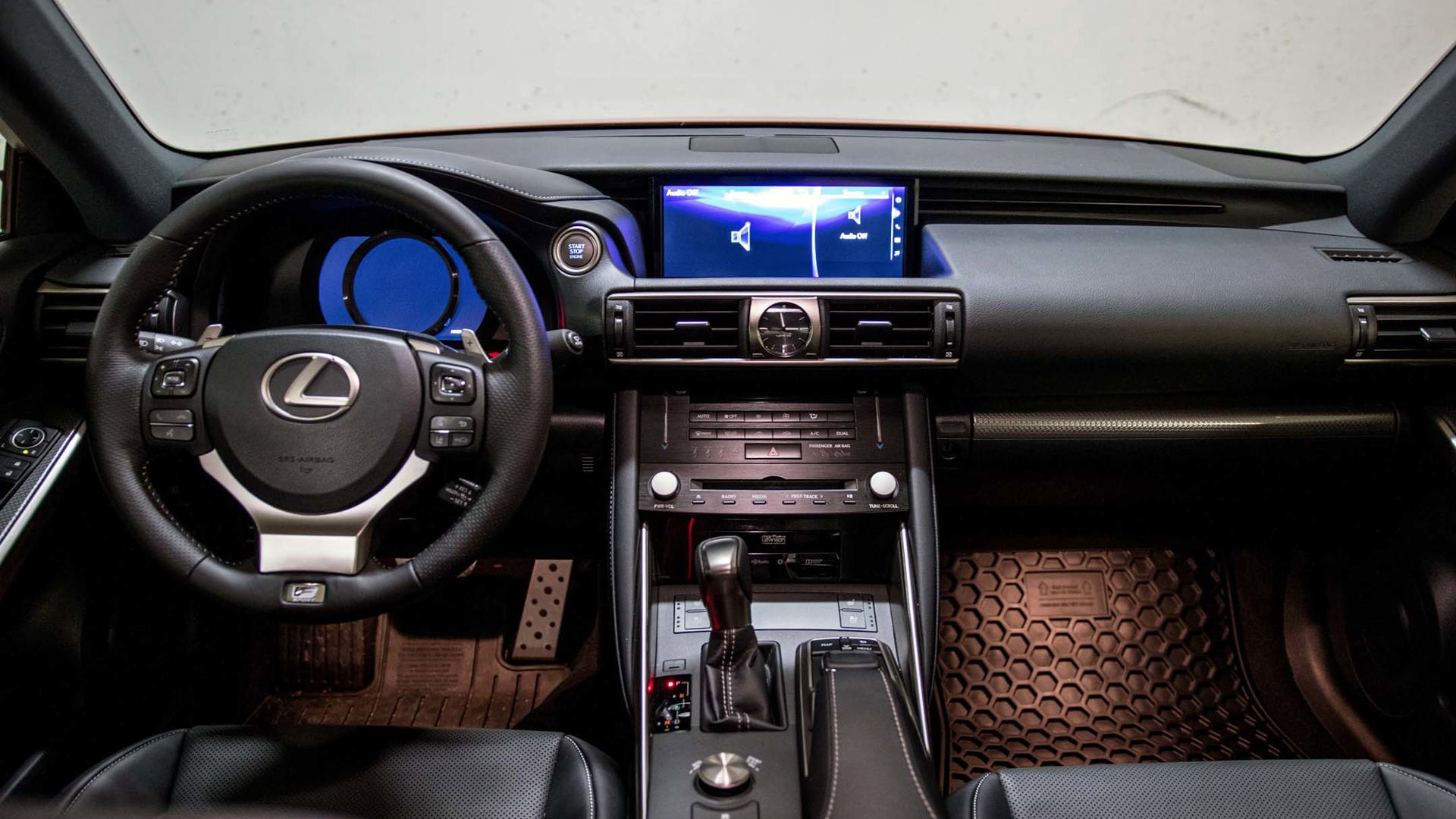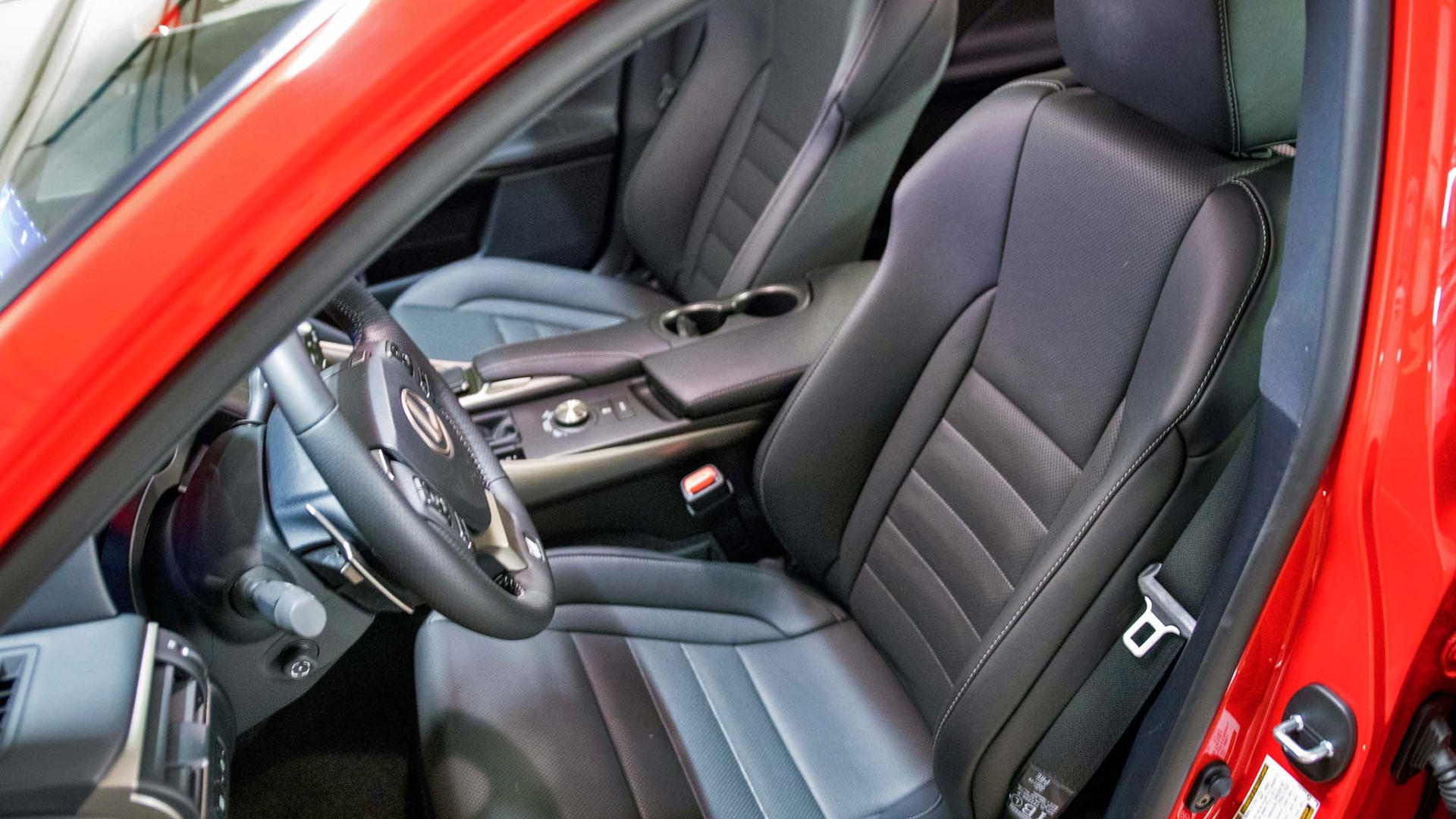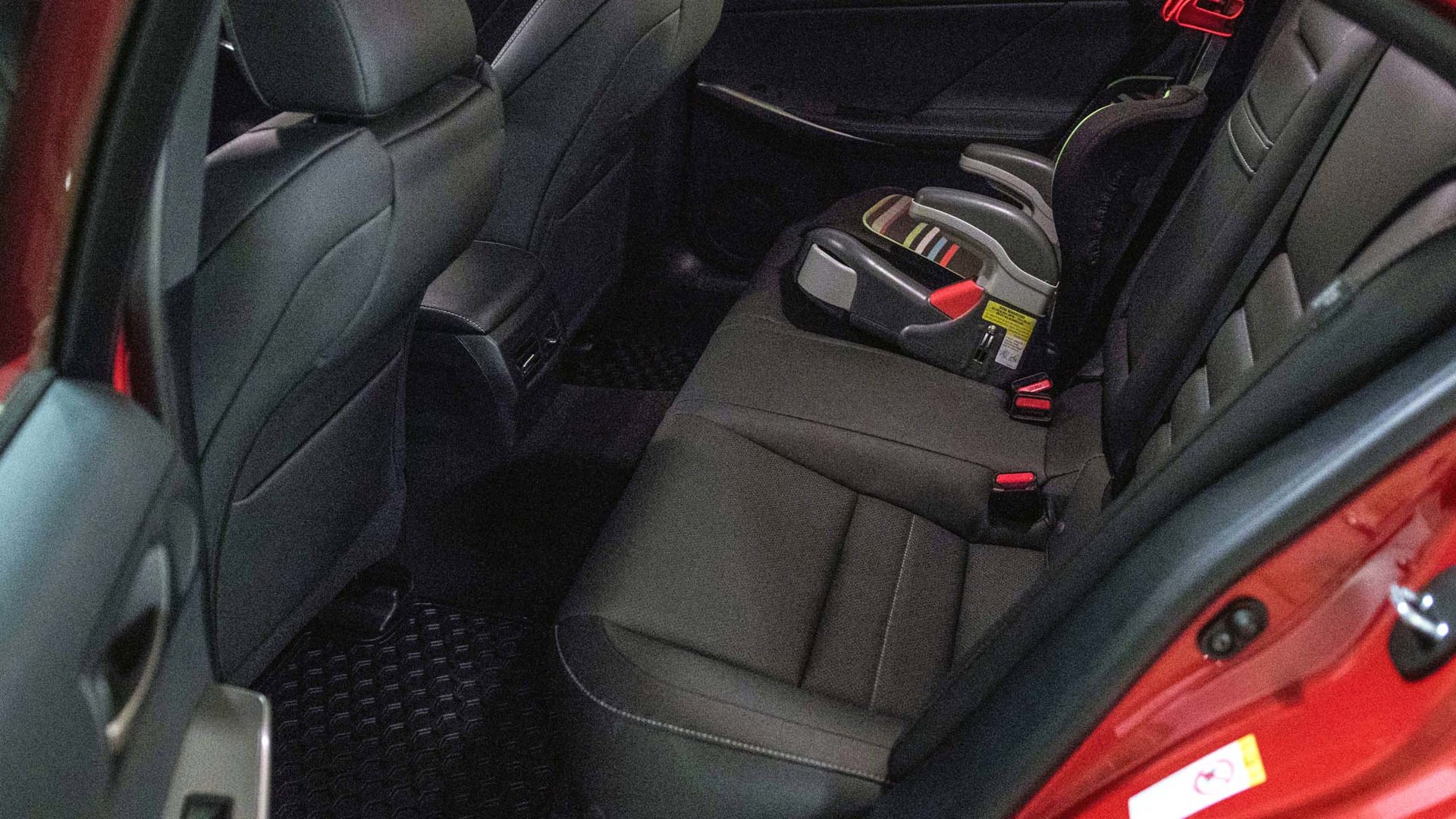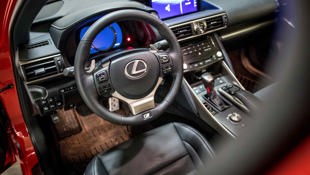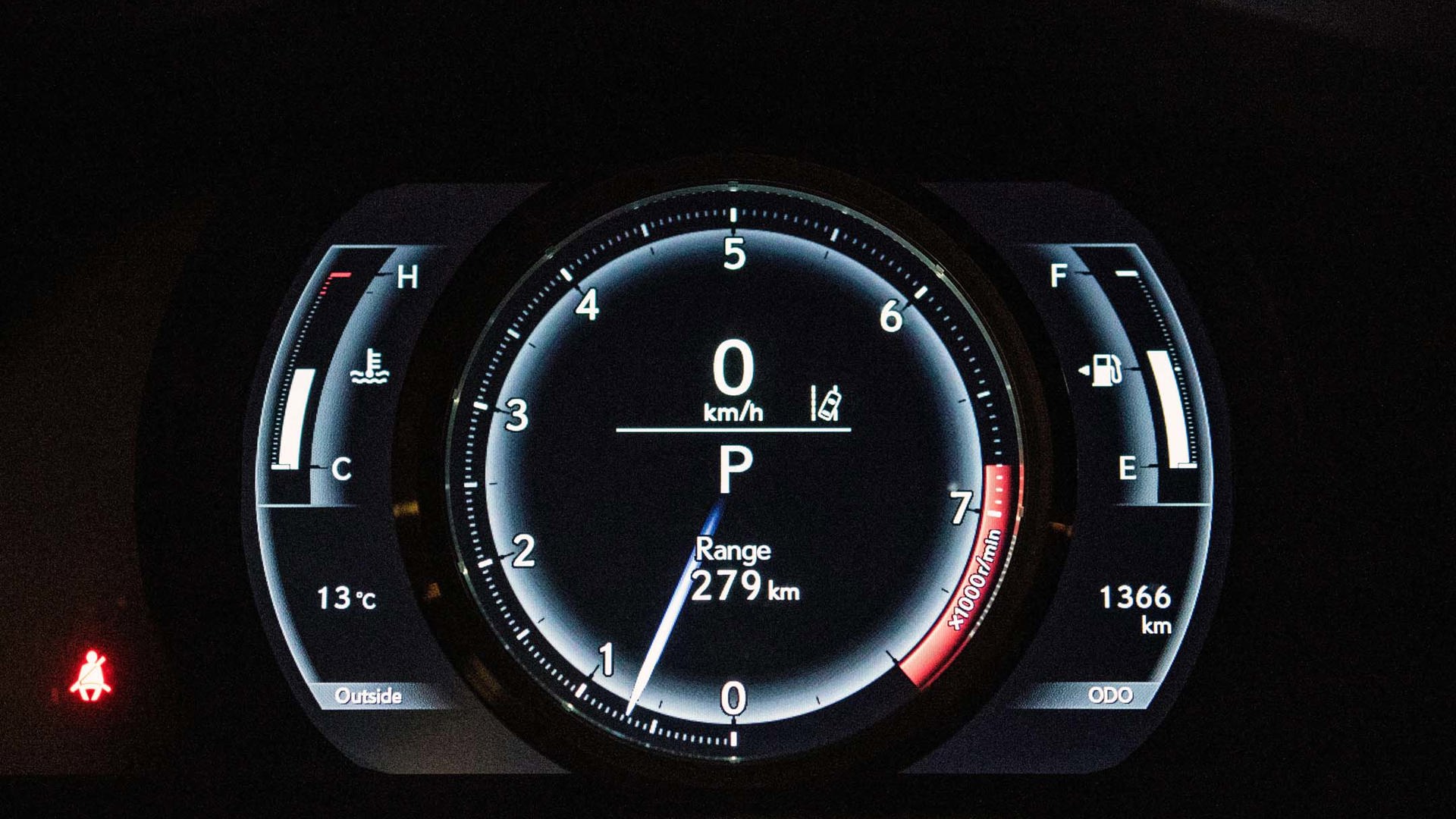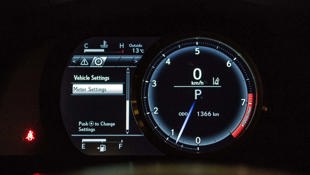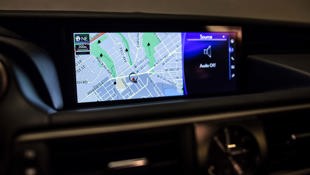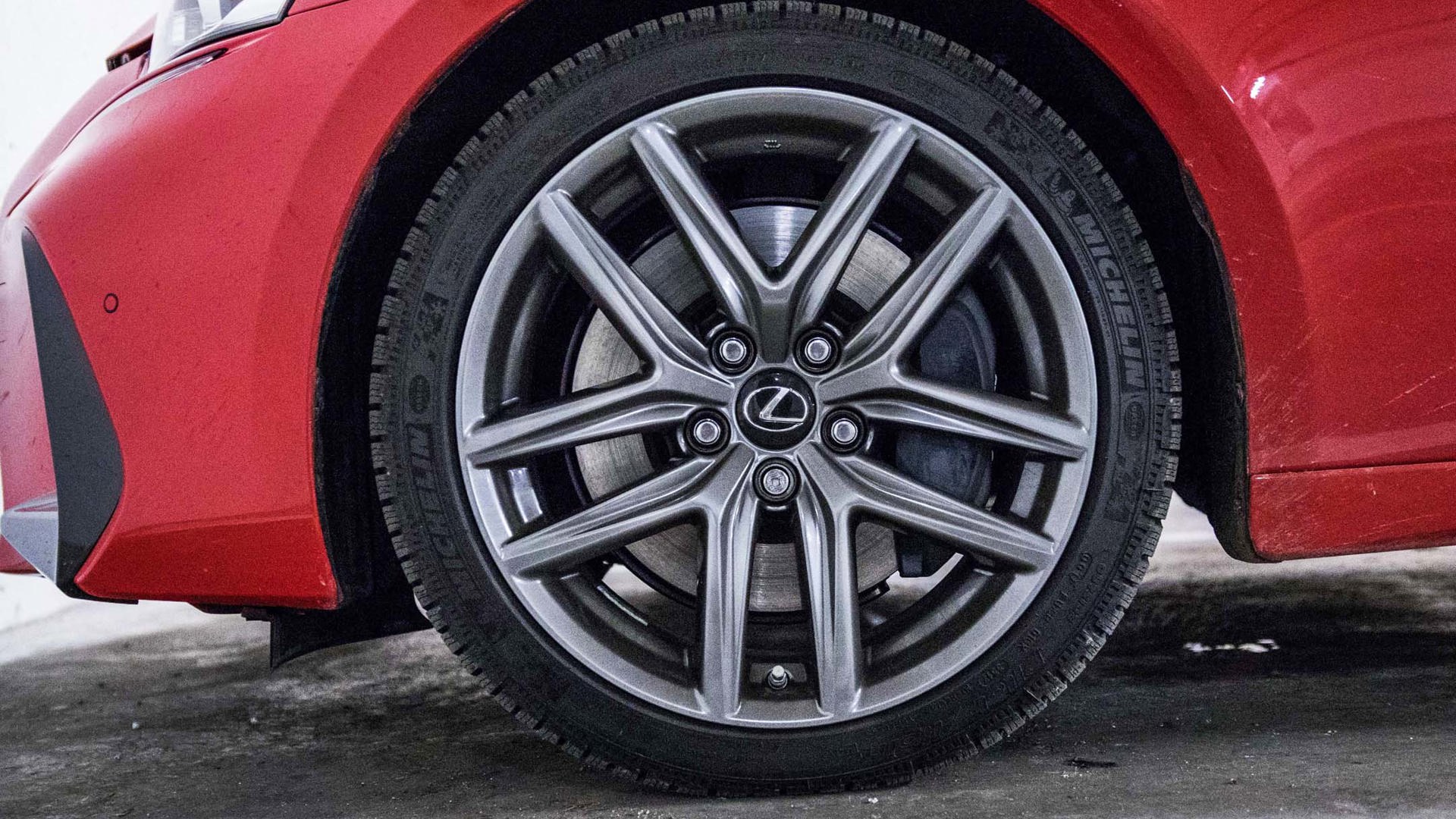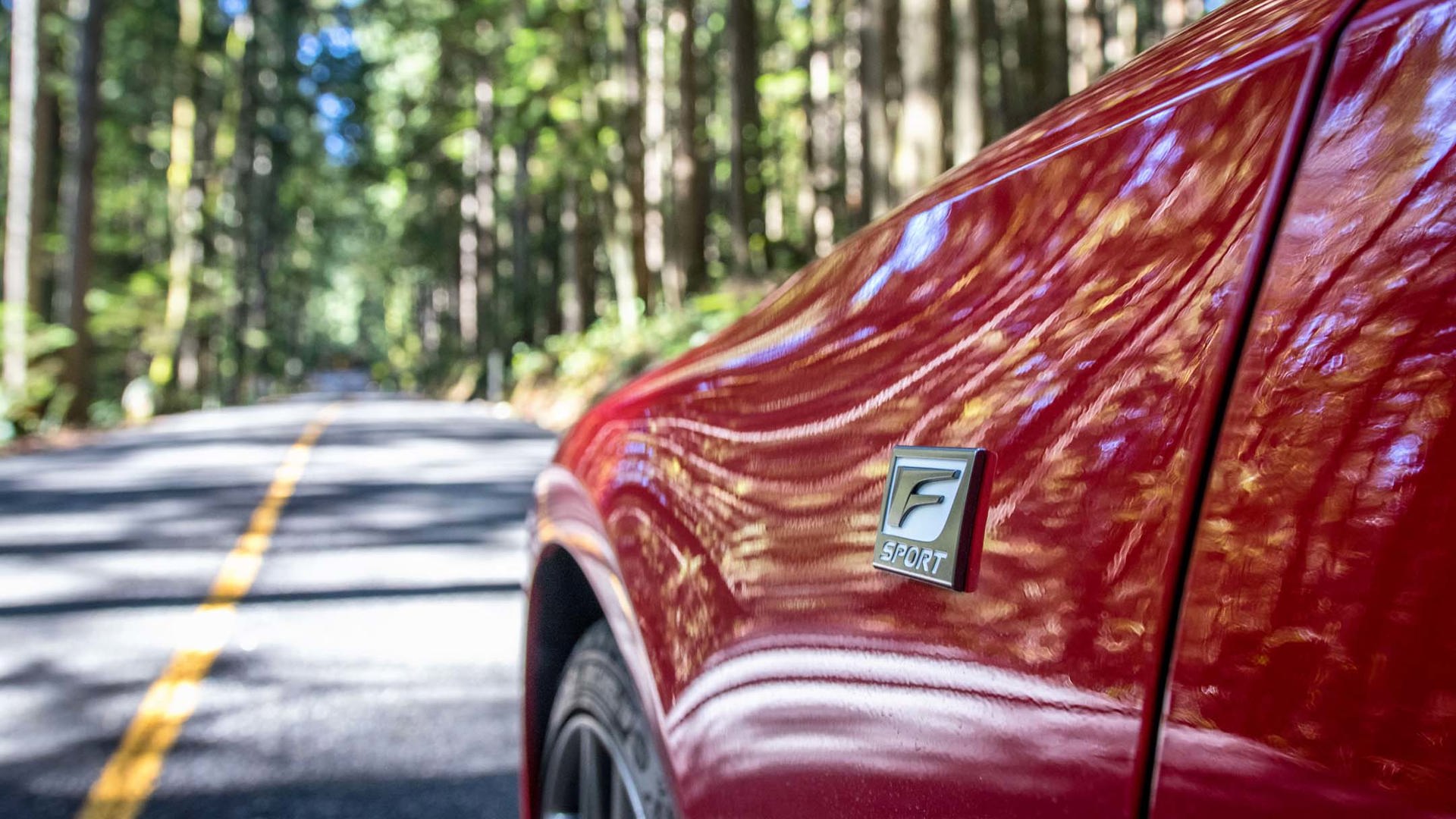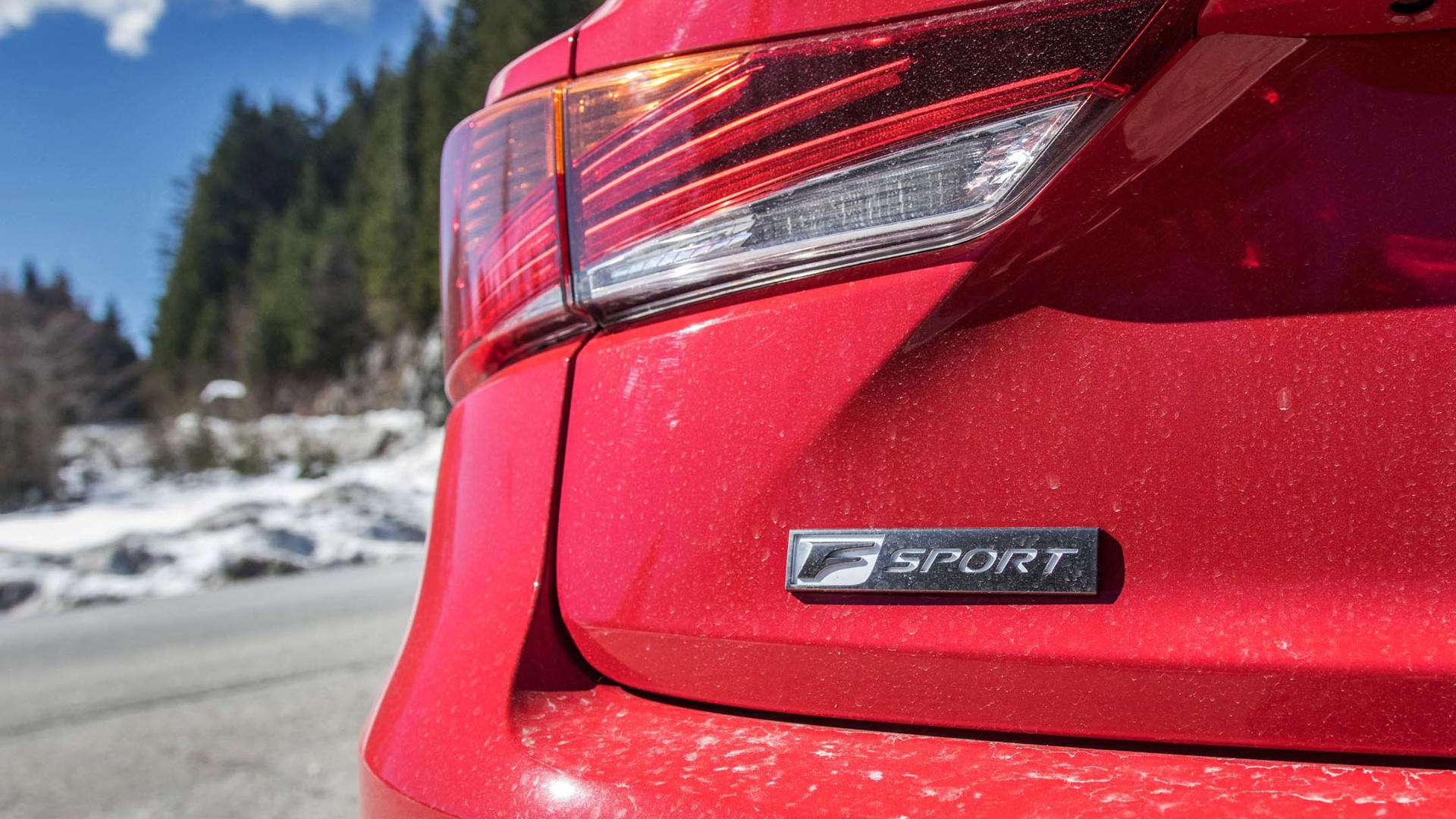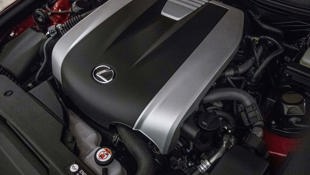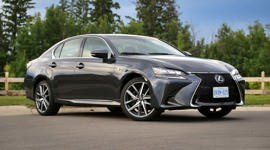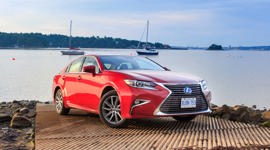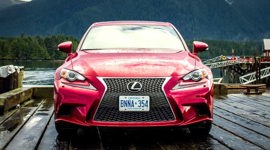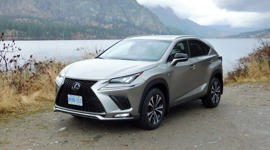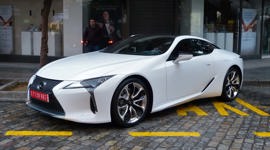 AutoTrader SCORE
AutoTrader SCORE
-
STYLING7/10
-
Safety8/10
-
PRACTICALITY7/10
-
USER-FRIENDLINESS5/10
-
FEATURES7/10
-
POWER7/10
-
COMFORT8/10
-
DRIVING FEEL7/10
-
FUEL ECONOMY7/10
-
VALUE8/10
In 2000, the heir to the Toyota throne returned. Akio Toyoda was young and vigorous, but he was also taking the helm of a company that had transitioned away from sports cars and towards the hybrids and crossovers that would define the future. He was an avid golfer, not quite a gearhead.
311 hp seems like it should be enough, but a torque peak approaching 5,000 rpm leaves the IS feeling flat in a world of turbocharged rivals.
At his father’s suggestion, he met with Toyota’s legendary test driver, Hiromu Naruse. Relatively unknown outside the company, Naruse had his hands on every major Toyota project with any sporting aspirations, from the 2000GT, to the Celica, to the MR2, and on to the Supra. His shadow loomed large in Toyota’s corporate structure, and he was notoriously blunt.
“I don’t want to be preached to about cars by someone who doesn’t even know how to drive,” he told Toyoda.
So, Naruse started giving Toyota’s president driving lessons, blasting up and down Japan’s mountain passes, and around the Toyota test track. Akio learned to love driving, picking up a passion he’d retain, and some of that early Toyota magic was preserved and passed on to a new generation.
However, Naruse himself died in 2010, in a crash while developing the LFA halo car near the Nürburgring. His influence still rings out over the years, but his personal special touch is absent. Which, at long last, brings us to this Japanese take on the BMW 3 Series.
The current IS series of sedans may be thought of as a qualified success. While Lexus hasn’t managed to match 3 Series sales figures, a perennial benchmark, they have at least moved several thousand units over the course of the year in the US market. Lexus remains a crossover brand, with the NX currently outselling the IS nearly three-to-one.
You have to imagine Naruse being somewhat unimpressed by the rising popularity of crossovers, but that’s a phenomenon affecting all manufacturers. Suffice it to say that, apart from full-sport models like the GS-F and RC-F, the IS provides a little sporty, nimble flavour in the Lexus range. Or rather, it very nearly does.
To begin, the less said about the front face of this car, the better. No one who hates that huge gaping grille and busy styling cues will be convinced to love them. No one who prefers the relentlessly Japanese swooshes and slices will pine for the days when Lexus was reserved and a bit boring. You can make your own mind up.
Personally, apart from the Noh-mask front end, the IS is a very nicely proportioned car, free from the model bloat that has affected its competition. Those wheels are 18 inches in diameter, and does it look like the IS would benefit from 19s or larger? It does not.
Unfortunately, the expanding waistlines of cars like the Mercedes C-Class and 3 Series have given them additional room inside, and the IS rates as bordering on claustrophobic. There’s much to like here, this being the sportiest F-Sport 3 package, which includes upgrades like a sport steering wheel and sport seats – ugh, stop saying sport, Brendan.
Think cockpit, not command centre. In typical Lexus fashion, everything is near-perfect with regards to fit and finish, with the seats being particularly nice. When Lexus first debuted these, the company made much of some new machines designed to get better curvature into the seat bottom; as a result, they’re very snug, and while comfortable for most drivers, won’t please anyone who would normally be taking a look at the more-pillowy ES model.
The compact size has also rendered the IS’s rear seats somewhat tight in size. If regularly transporting larger children, Infiniti’s Q50 sedan is a much better option here, with the IS feeling like either a choice for singletons, or families with small kids. A rear-facing child seat fit without issue, but space was at a premium. The trunk, at 306 L, was acceptable.
Likewise, storage space for driver and passenger is at a premium, with few cubbies and relatively awkwardly placed cupholders. Basic controls are minimalist, but likeable – the capacitive sliders for the air-conditioning controls work better than you’d think, and the delicate stereo knobs function well.
Other considerations include the LFA-style sliding instrument ring (cooler than such a gimmick should be), an excellent stereo, and a heated steering wheel that’s not heated all the way around. But let’s talk about the big fat fly in the ointment: the Lexus infotainment.
BMW and Mercedes may take some stick for over-complex systems featuring screens that look like iPads nailed to the dashboard, but Lexus absolutely has the goofiest infotainment system on the market. Toyota’s Entune system is easy to use, sensible, and straightforward. Lexus’ trackpad system jumps all over the place and forces you to take your eyes off the road. It distracts from the task of driving, and I can think of no worse complaint.
So, do all your fiddling about when parked, and keep the driving for driving. Hiromu would want it that way. However, if you plonked him in the driver’s seat of this machine, He’d more than likely come away with a rather large to-do list.
In Canada, the V6-engined IS 350 comes with all-wheel drive only. In the US, there’s the option of a rear-drive model which also gets an eight-speed automatic. That eight-speed received special fettling and by all accounts wakes the car up a little.
There’s nothing overtly wrong with the six-speed, but in this competitive segment, it feels like Lexus is on its back foot here. Especially as even the Sienna minivan gets eight gears to play with.
However, the all-wheel drive makes a great deal of sense, as Canadians don’t really buy rear-drive luxury cars anymore (apart from more hardcore editions like the M3). The IS 350 is grippy, if a little less hard-edged than it could be.
It’s the same story under-hood, where a 3.5L V6 provides what should be ample power on paper, but comes up a little short under your right foot. 311 hp seems like it should be enough, but a torque peak approaching 5,000 rpm leaves the IS feeling flat in a world of turbocharged rivals.
Mind you, this is a charge also to be levelled at the V8-powered RC-F and GS-F models, both of which required some pretty severe digging to get to the good stuff. In day-to-day driving, leaping into the IS350’s compact and sporty cabin felt special, but the V6’s so-so low-end power didn’t invigorate.
Time for a bit of a look at the F-Sport’s additional extras. For the first piece of good news, the multiple driving modes aren’t merely software changes to the throttle response and transmission shift points; there is a proper adaptive suspension here, one that firms up nicely but doesn’t seek to shatter your spine.
The second good piece of news is that this chassis is a delight, far nimbler than the likes of the aforementioned Infiniti, and smaller-feeling than the more powerful BMW. In fact, it actually drives like a previous-generation BMW, apart from some slightly numb steering.
On a back-road, with the revs up and the V6 snorting happily, the IS finally comes alive. It requires a bit of work to keep things on the boil, but the chassis is compliant, and the engine well matched to it. There’s a sense of balance here, of a car built for an early morning attack on some narrow ribbon of Japanese tarmac.
Frankly, it leaves me wanting more. More sharpness in the drivetrain, a little more feel from the steering, perhaps a little better soundtrack.
Alternatively, if I set aside sporting pretensions and look at the cold, hard reality of everyday driving, maybe less is what’s needed here. Needing determination and the perfect road to unlock a car’s hidden personality is all well and good, but what if you live in Toronto, where the good roads are hours out of town? For the vast majority of drivers, straight-line performance and the ability to post impressive lateral grip in sweeping turns are far more easily digested than the ability to dance.
Consider the IS350 to be a bit of a GT86 moment for Lexus. There’s some character here, but it requires work. Work used to sell luxury cars, back when people actually bought the things instead of leasing them for three years and then turning them in when they got bored of the colour, but I’m not sure it’s a feature any longer.
What direction might the IS take in the future? On the positive side, the new LC500 is the real deal, a blend of Naruse’s beloved LFA with a level of luxury that will actually sell. It’s wonderful.
Yet at the other end of the spectrum, Toyota seems to be leaning on other manufacturers to inject sportiness into their range. The upcoming Supra, a joint project with BMW, is one such example.
Hiromu Naruse wouldn’t have left the IS alone until it was just right. He’s gone now, but the engineers he trained and the CEO he taught to drive are still part of leading Toyota forward. Here’s hoping their next project has just a little more touch of the master about it.
| Engine Displacement | 3.5L |
|---|---|
| Engine Cylinders | V6 |
| Peak Horsepower | 311 hp @ 6,400 rpm |
| Peak Torque | 280 lb-ft @ 4,800 rpm |
| Fuel Economy | 12.3/9.1/10.9 L/100km city/hwy/cmb |
| Cargo Space | 306 L |
| Model Tested | 2018 Lexus IS 350 AWD |
| Base Price | $52,900 |
| A/C Tax | $100 |
| Destination Fee | $2,045 |
| Price as Tested | $57,945 |
|
Optional Equipment
$2,900 – F-Sport 3 (heated sport steering wheel, 10-speaker audio, moonroof; aero/appearance package, adaptive headlights, adaptive suspension, 18" alloys) $2,900
|
|
